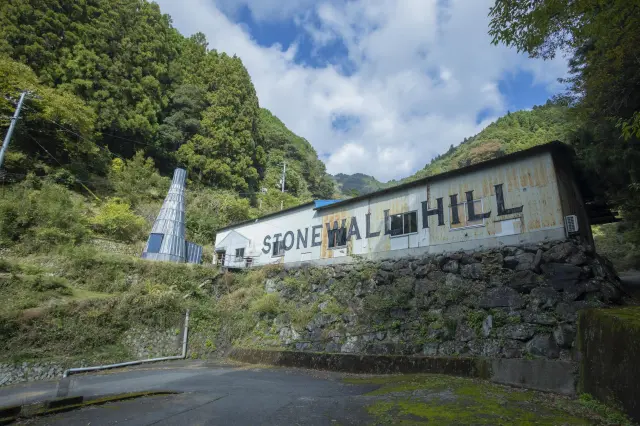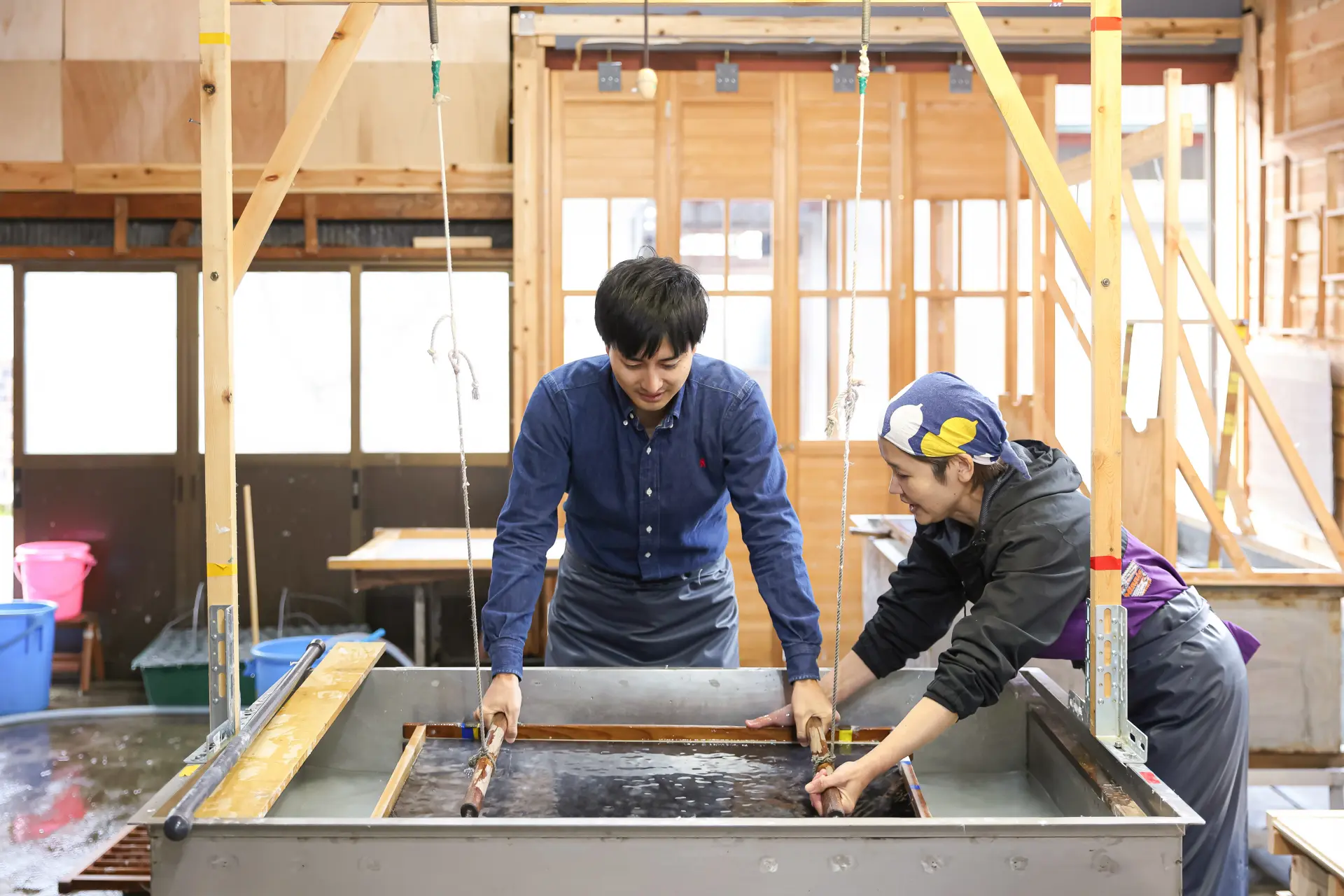
Fukui: A Journey to Experience Japan’s World-Class Craftsmanship
Last update
Fukui Prefecture is home to seven designated traditional crafts, with the Echizen region boasting five of them.
On this journey, we explore Echizen Washi, a craft with over 1,500 years of history, and participate in a paper-making experience at a workshop where master artisans and female craftswomen play an active role in preserving the tradition.
The following day, we take a short trip from Echizen to Sabae, widely recognized as "The City of Eyewear." With over 90% of Japan’s eyeglass frames produced here, Sabae has become a hub of innovation. We gain firsthand insight into its craftsmanship through museum exhibits and a custom sunglasses-making experience.
Join us on this journey to discover and engage with the time-honored traditional crafts of Echizen.
Table of Contents
DAY1
6:30am – Departing from JR Osaka Station
Our journey into Fukui’s world of craftsmanship begins at JR Osaka Station, where we board the Limited Express Thunderbird to Tsuruga Station. From there, we transfer to the Happiline Fukui and disembark at Takefu Station.
Next, we switch to bus transportation, taking the Fukutetsu Bus Ikeda Line (bound for Kanayama) and getting off at Washi-no-Sato Bus Stop. A 10-minute walk brings us to our first destination—a traditional Paper Mill, where we will immerse ourselves in the time-honored art of Echizen Washi.
10:00am – Experience Traditional Papermaking at Ryozo Yanase Paper Mill and Discover the Depth of Washi Craftsmanship
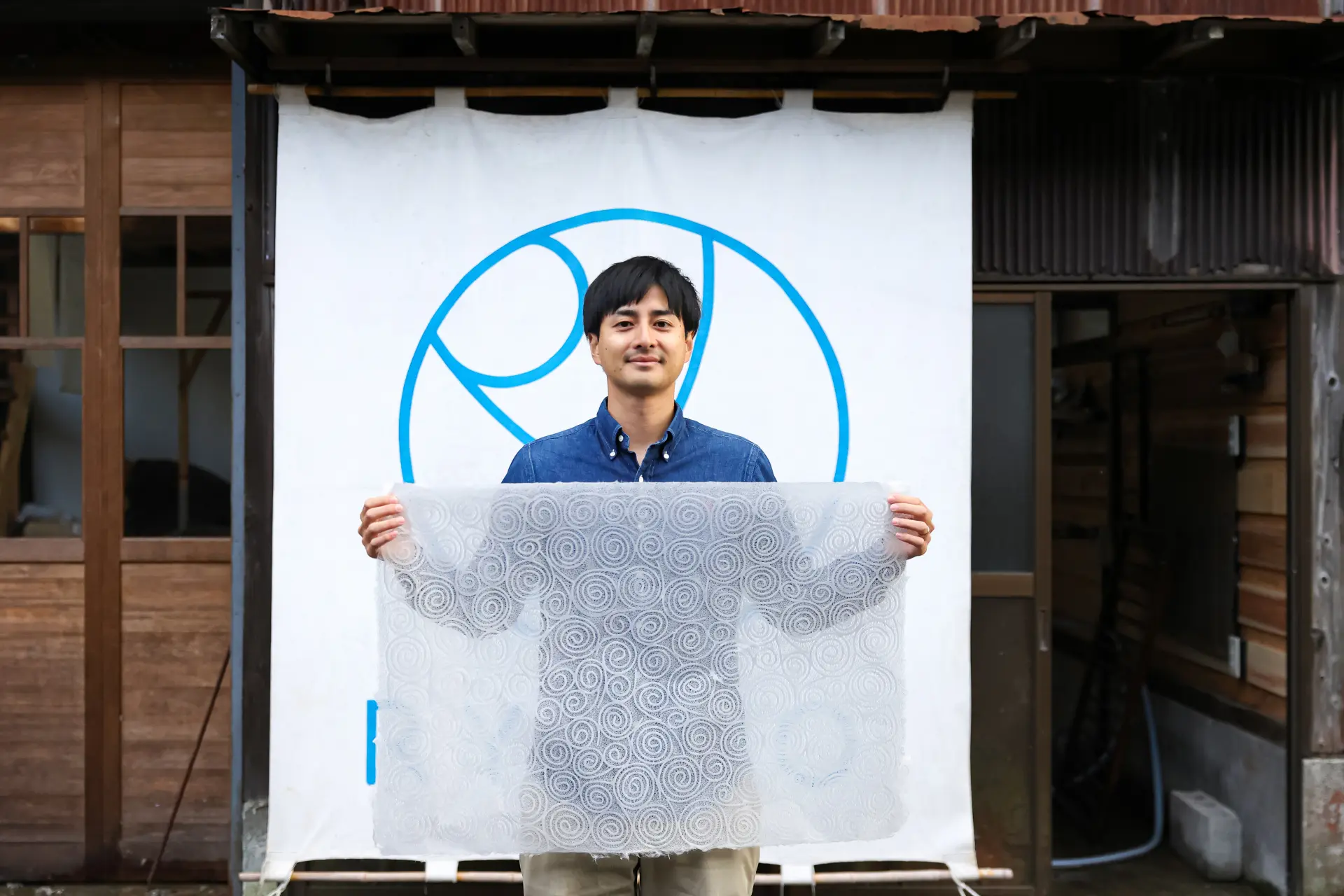
The finished washi is carefully rolled into a tube so you can take it home as a keepsake.
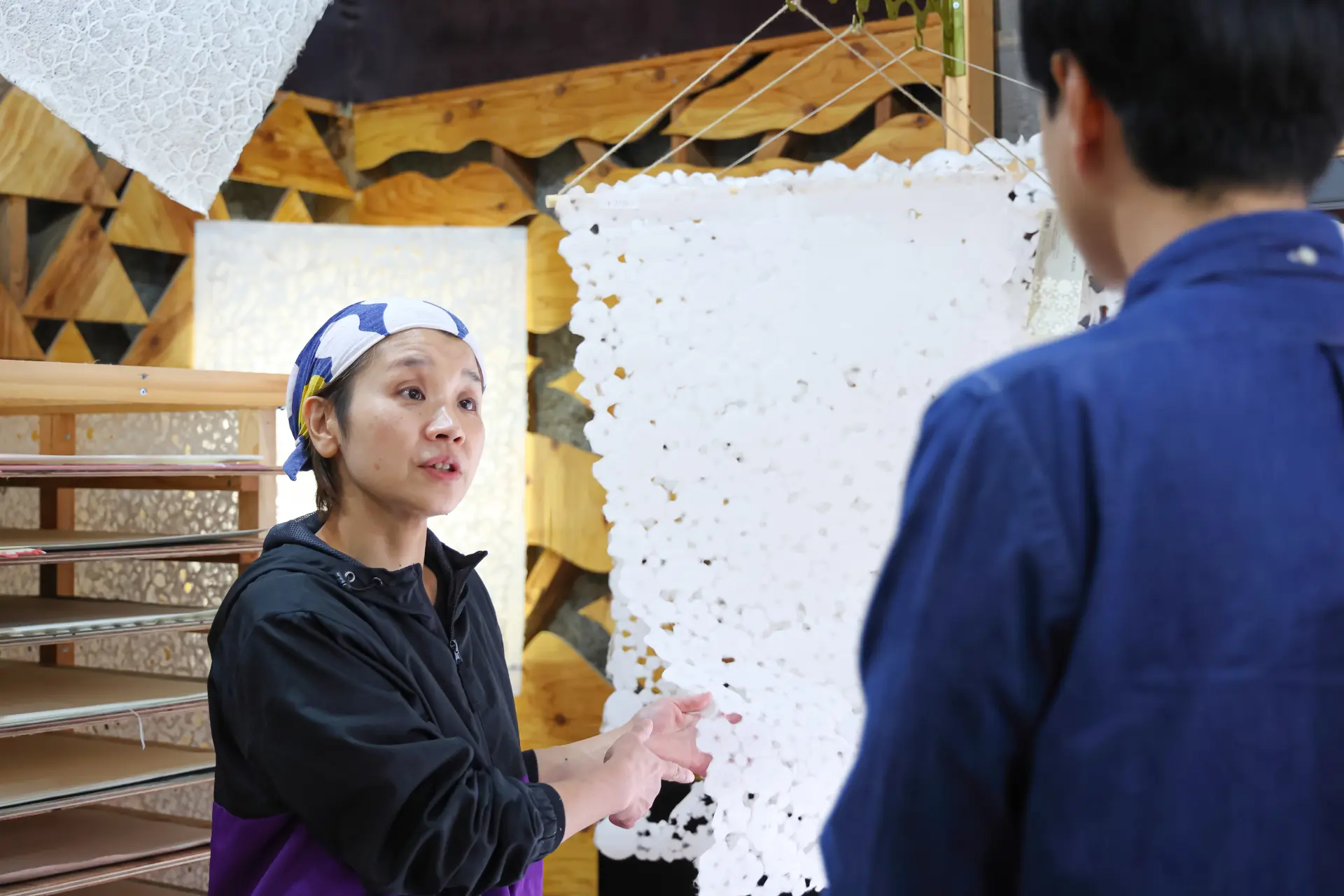
First, we delve into the 1,500-year history of Echizen Washi, gaining insight into its rich traditions and craftsmanship.
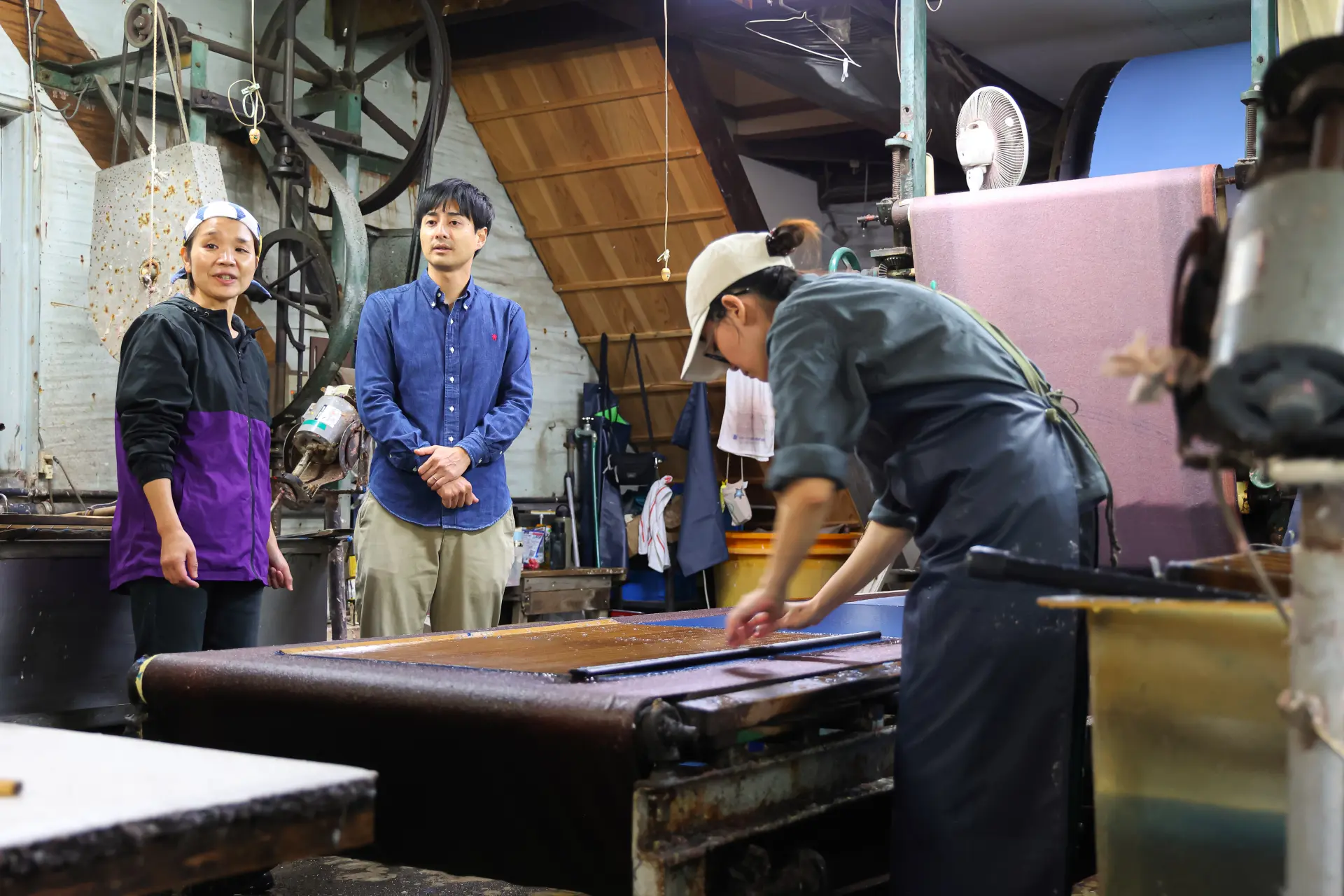
Visitors get a rare opportunity to observe artisans at work inside an actual workshop, a space usually not open to the public.
Passing through a district lined with traditional Japanese houses with tiled roofs, our first stop is Ryozo Yanase Paper Mill, a paper workshop founded in 1946 that specializes in making wrapping paper for wagashi (Japanese sweets).
Stepping through the noren curtain emblazoned with the workshop’s "RYOZO" logo, we are immediately captivated by an array of delicately crafted washi products, filling us with excitement. Here, visitors can experience the traditional art of paper-making, using a suketa (papermaking screen) to scoop up the fibrous liquid of kōzo (mulberry bark) and other raw materials to form washi sheets.
As we admire the beautifully crafted washi items, we are warmly greeted by third-generation artisan Kyoko Yanase, who welcomes us with a cheerful "Konnichiwa!" Her extensive knowledge and passion for washi-making shine through as she provides clear and engaging explanations, patiently answering every question.
After the introduction, we are given a rare opportunity to tour the actual workshop, where real products are made. Uniquely, in Echizen Washi, many of the artisans are women, and this workshop is no exception. Watching Yanase and her team skillfully craft washi, their graceful movements and meticulous technique create an atmosphere of focus and dedication, leaving us deeply inspired.
With a newfound understanding of washi materials and the intricate production process, we are now ready for the hands-on papermaking experience.
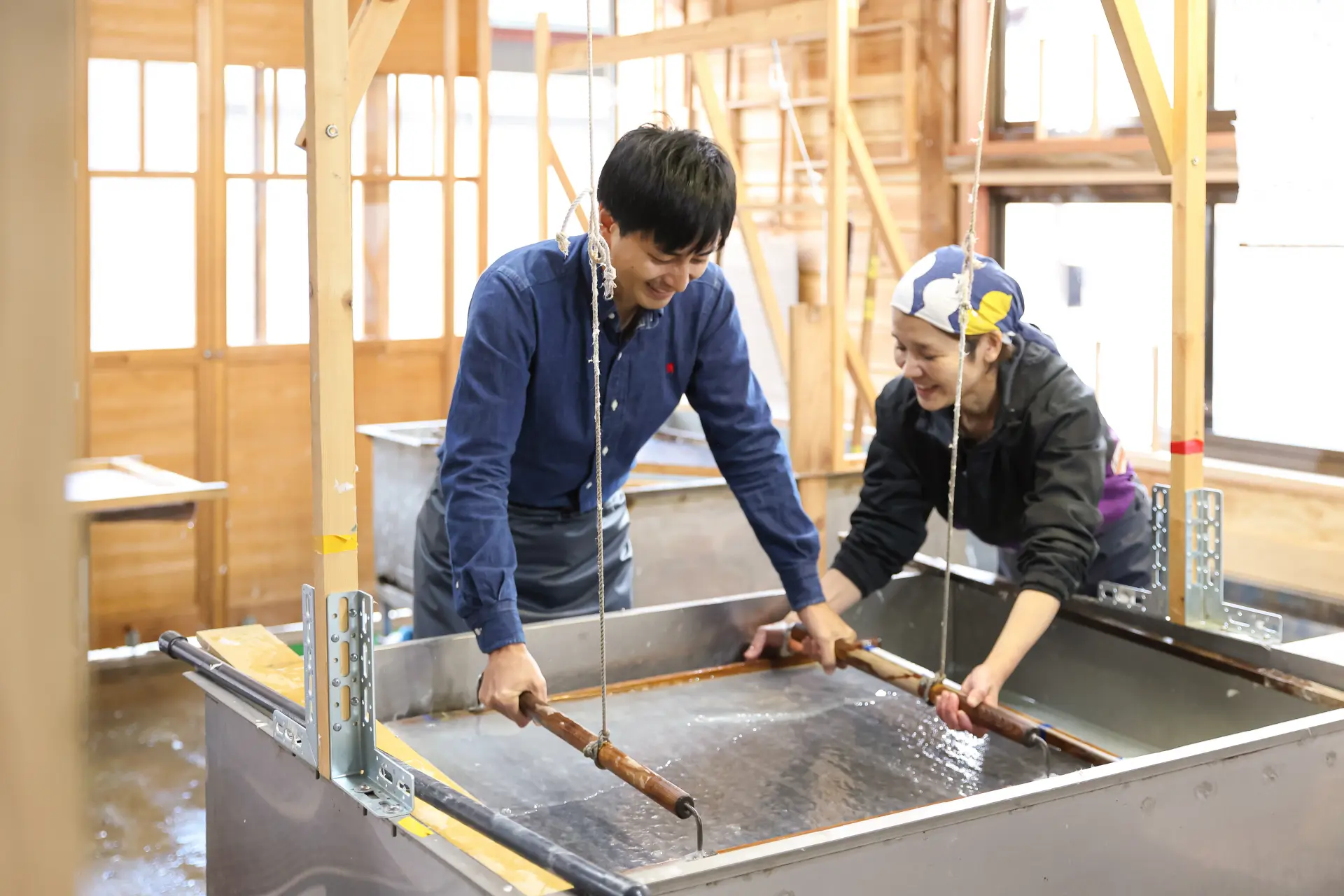
For the paper-making experience, the key is to move the screen gently up and down without applying too much force.
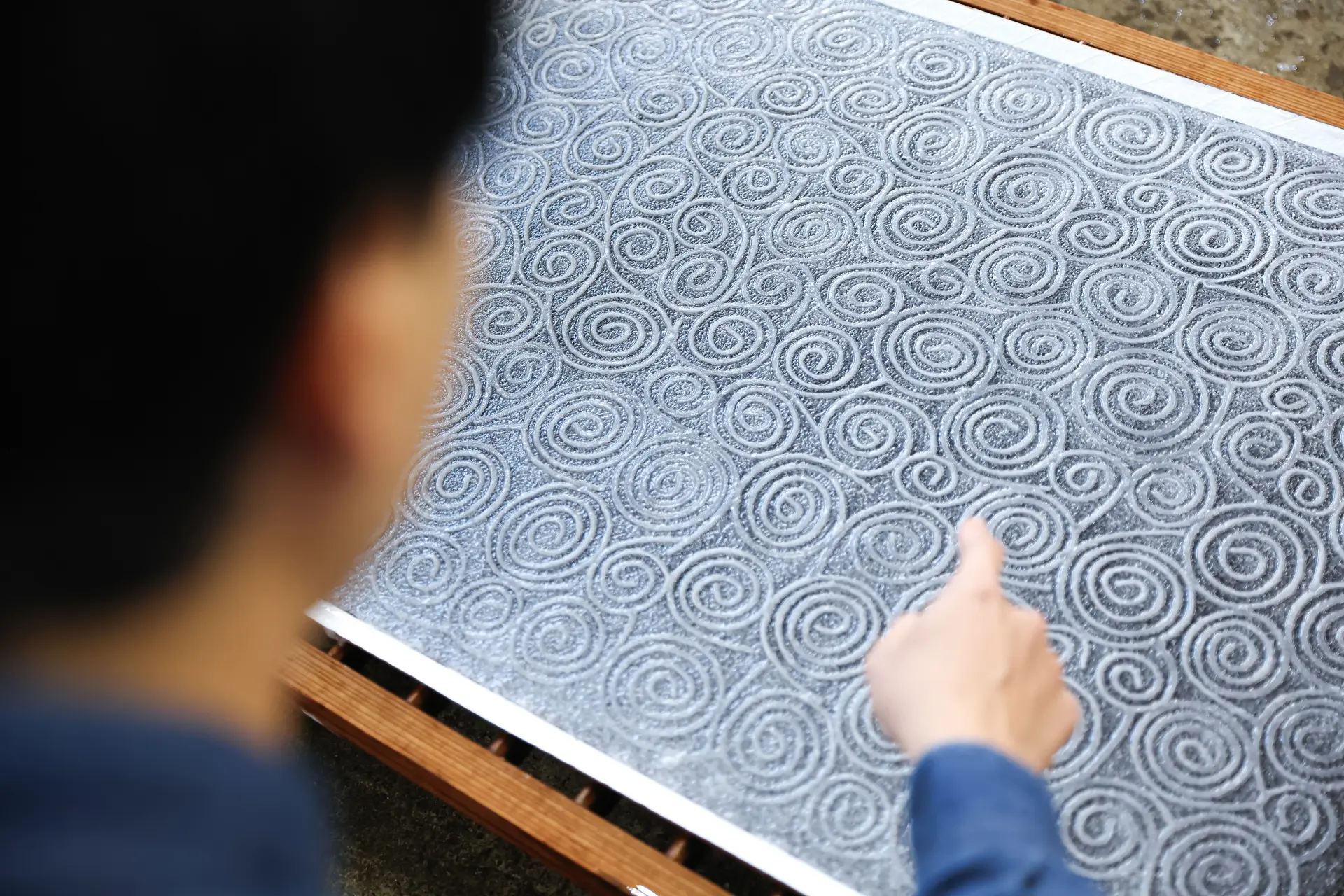
Using a metal mold, participants create their own original patterns on the washi, adding a unique personal touch to their handmade paper.
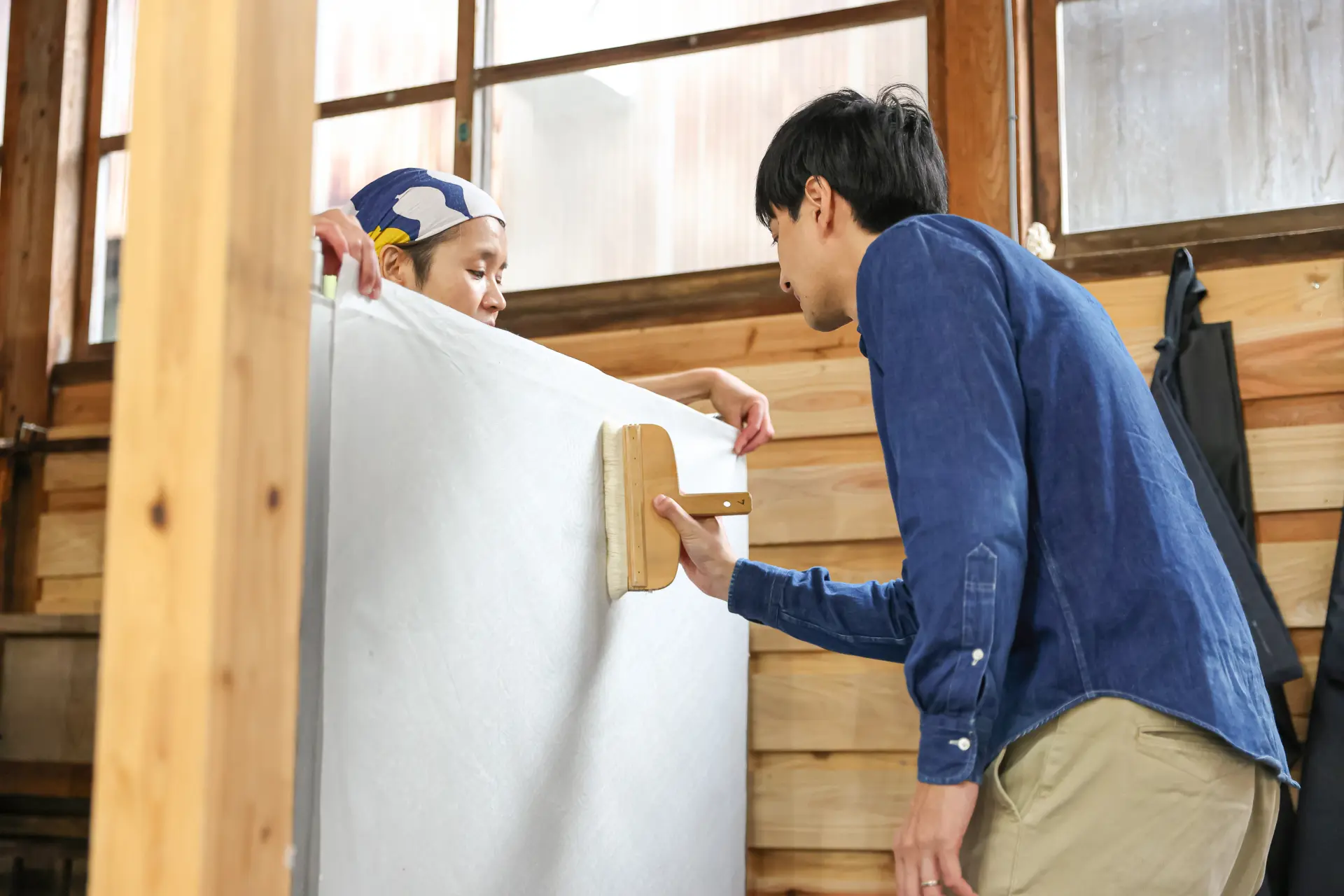
Drying Process. Using a brush, the freshly made washi is carefully pressed onto a surface, ensuring there are no air bubbles, allowing it to dry smoothly and evenly.
We move to the experience workshop, donning rental aprons and rubber boots, instantly feeling like washi artisans. Under the guidance of Yanase, we finally begin the hands-on experience.
Holding the suketa (papermaking screen) parallel to the water’s surface, we scoop up the fibrous liquid and move it up and down to evenly distribute the material. Achieving a uniform thickness proves to be more challenging than expected, but with Yanase’s constant support, even first-time participants can feel at ease. After repeating the scooping and shaking motion several times, we successfully complete the paper-making process.
Next, we use a metal mold to imprint decorative patterns onto the paper. After pressing out excess water and carefully drying the sheet, our handmade washi is complete! The finished piece is rolled into a prepared paper tube, allowing us to take it home as a one-of-a-kind souvenir—our very own Echizen Washi with an original swirl design.
After the workshop, we browse a selection of washi crafts, including folding fans and small accessories made by Ryozo Yanase Paper Mill, making for the perfect souvenir-shopping experience to conclude our visit.
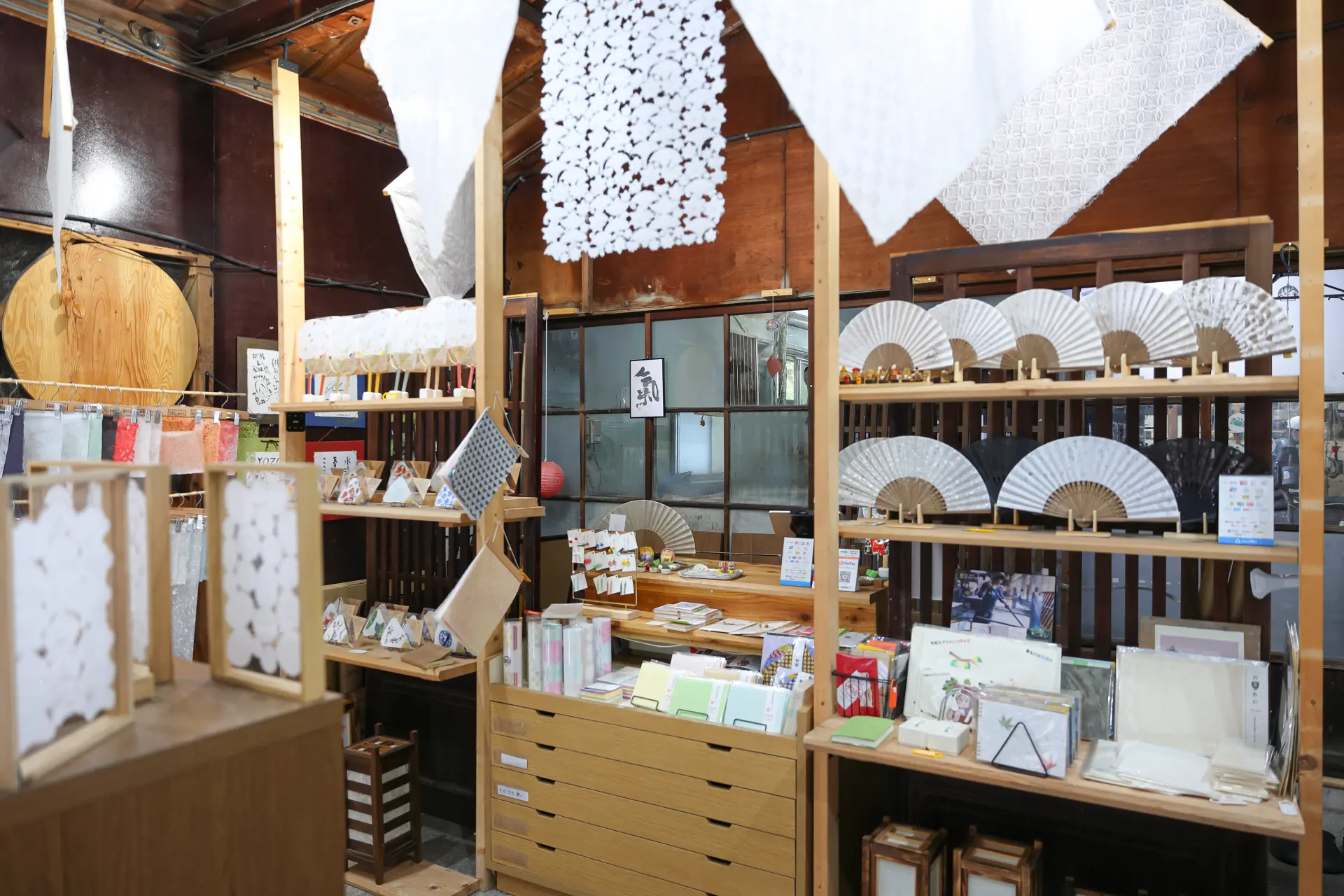
The attached shop is filled with a wide variety of washi accessories, beautifully displayed in every corner.
Basic Information
- Name in Japanese
- 和紙の奥深さを学ぶ 柳瀬良三製紙所の和紙漉き職人体験
- URL
- URL
12:30pm – Lunch at "Moriroku," a Historic Soba Restaurant Offering the True Flavor of High-Quality Soba
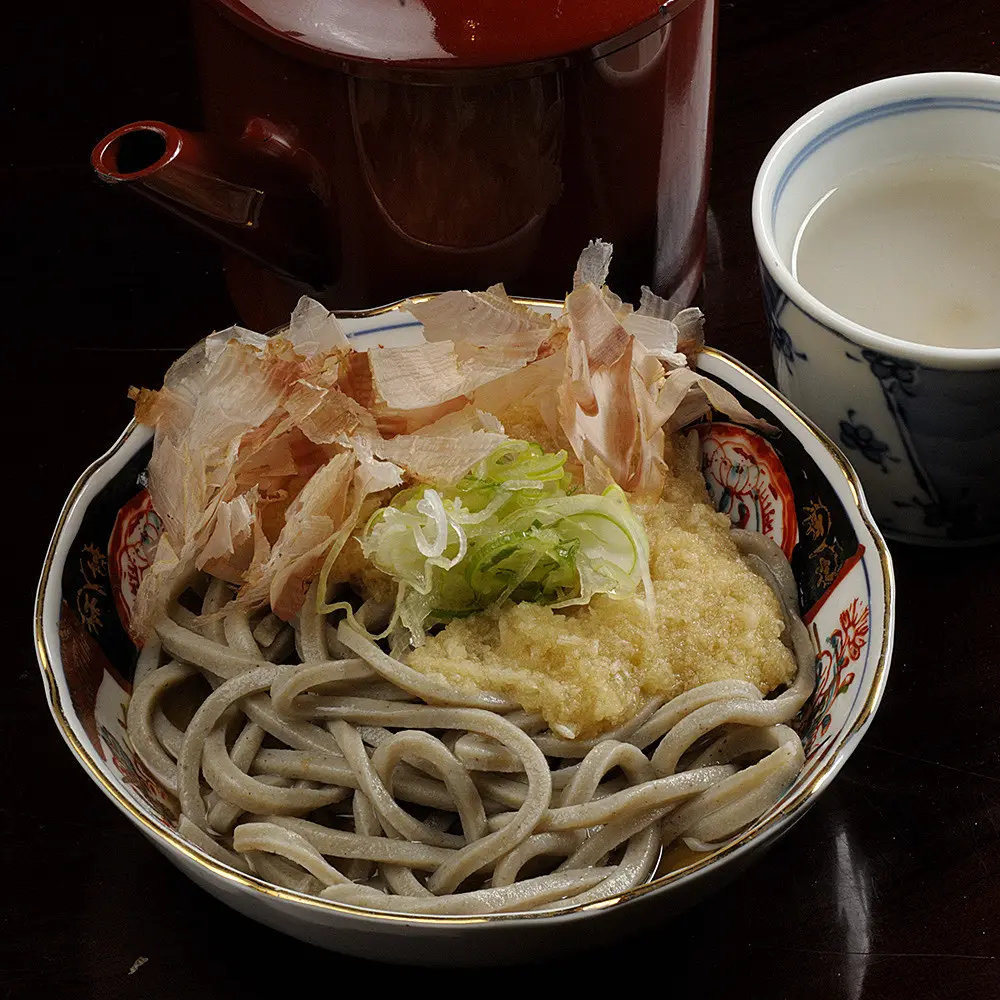
The Echizen Oroshi Soba, made with Ni-hachi soba (80% buckwheat, 20% wheat flour), offers a perfect balance of smooth texture and firm bite, complemented by the refreshing zest of grated daikon radish.
Heading north from the Paper Mill, we walk west along National Route 417 for about 20 minutes before arriving at Moriroku, a 150-year-old historic soba restaurant, where we enjoy a well-deserved lunch.
The soba here is made using a time-honored method, preserved since the restaurant’s founding. As soon as we take a bite, the fragrant aroma of buckwheat fills our senses, and the smooth texture enhances the overall experience. This level of quality is no coincidence. Moriroku uses only high-quality, locally grown heirloom Fukui buckwheat, carefully milled in-house to maintain its rich flavor and freshness.
To ensure that each dish is served at peak quality, the soba is freshly made every morning, with strict temperature and timing control from preparation to serving. The attention to detail is evident in the way they prepare their soba. For seiro (cold soba dishes), they use Jūwari Soba, which is made from 100% buckwheat flour and finely cut. For their signature Echizen Oroshi Soba, they use Ni-hachi Soba, a blend of 80% buckwheat and 20% wheat flour, cut slightly thicker to pair perfectly with the grated daikon radish and dipping sauce.
This unwavering commitment to craftsmanship and quality, much like the traditional Echizen crafts, makes dining at Moriroku an unparalleled soba experience.
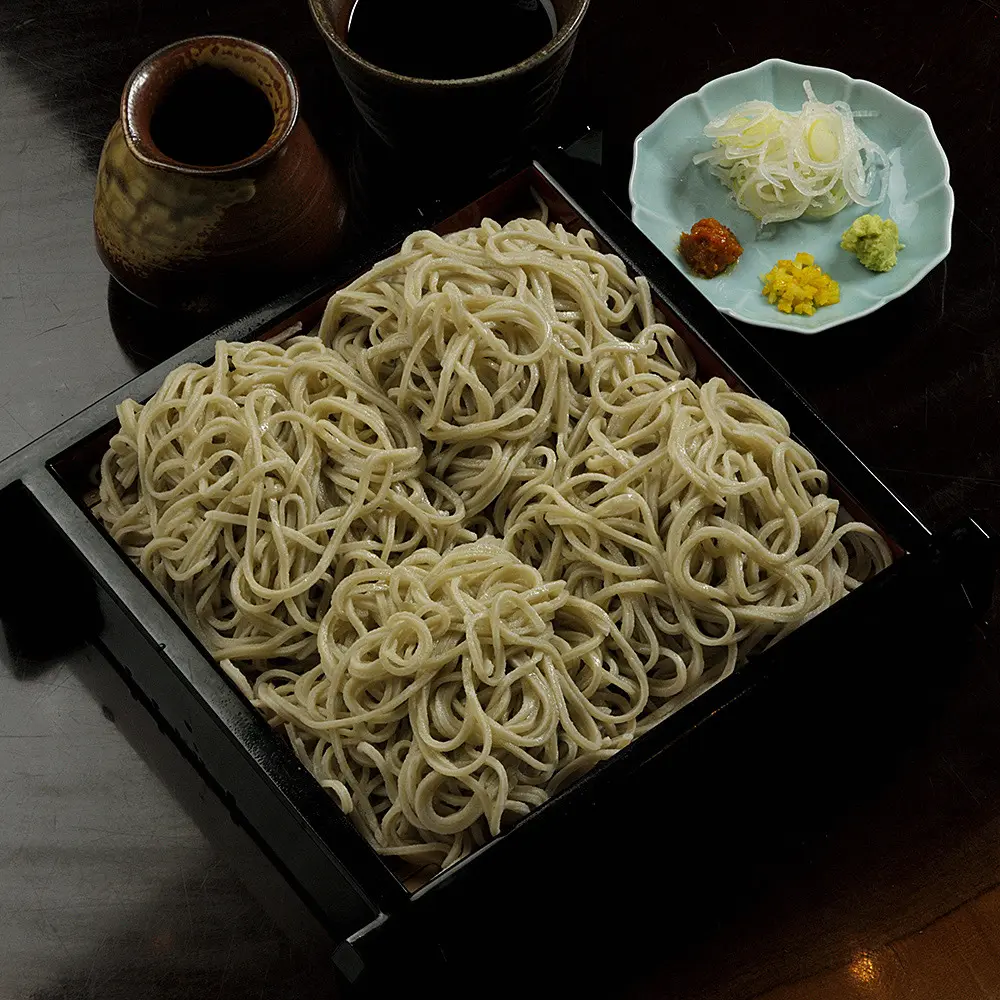
The seiro soba is carefully stone-milled in-house over the course of a week, resulting in a clear, refined flavor that eliminates any harshness, allowing the pure essence of buckwheat to shine through.
Basic Information
- Name in Japanese
- 森六
- Postal Code
- 915-0242
- Address
- 26-20 Awatabecho, Echizen City, Fukui
- Telephone
- 0778-42-0216
- Access
- Approximately 15-minute walk from "Washi no Sato" bus stop.
- Business Hours
- 11:00am - 2:00pm, Weekends and holidays 11:00am - 3:00pm
- Closed
- Mondays and the third Tuesday of each month (If a public holiday falls on these days, the restaurant will be closed the following day).
- URL
- URL
2:30pm – Delve into the 1,500-Year History of Echizen Washi at the "Echizen Washi Village Paper & Culture Museum "
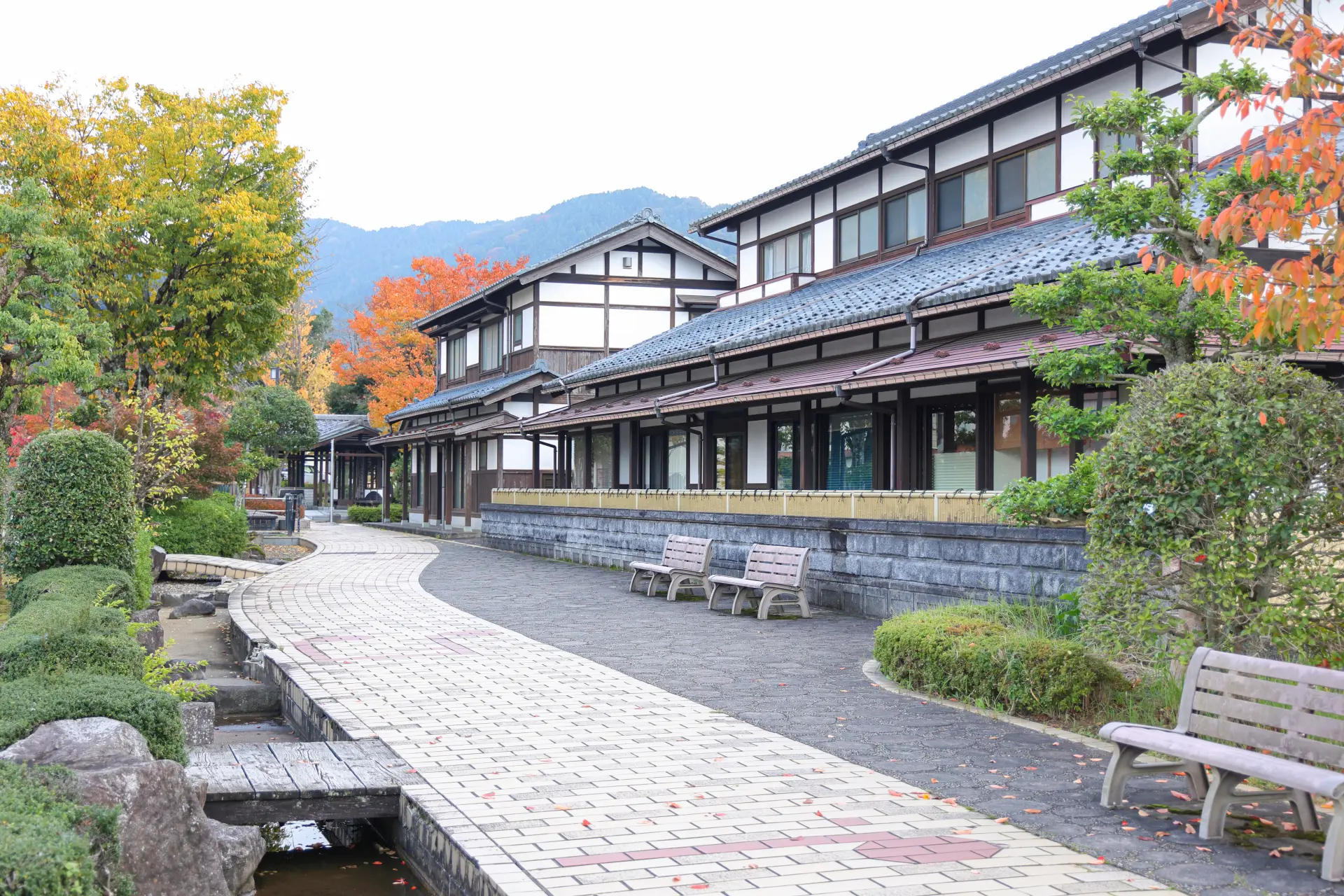
The 230-meter-long Washi no Sato Street is lined with traditional houses, creating an atmosphere that reflects the rich heritage of Echizen Washi.
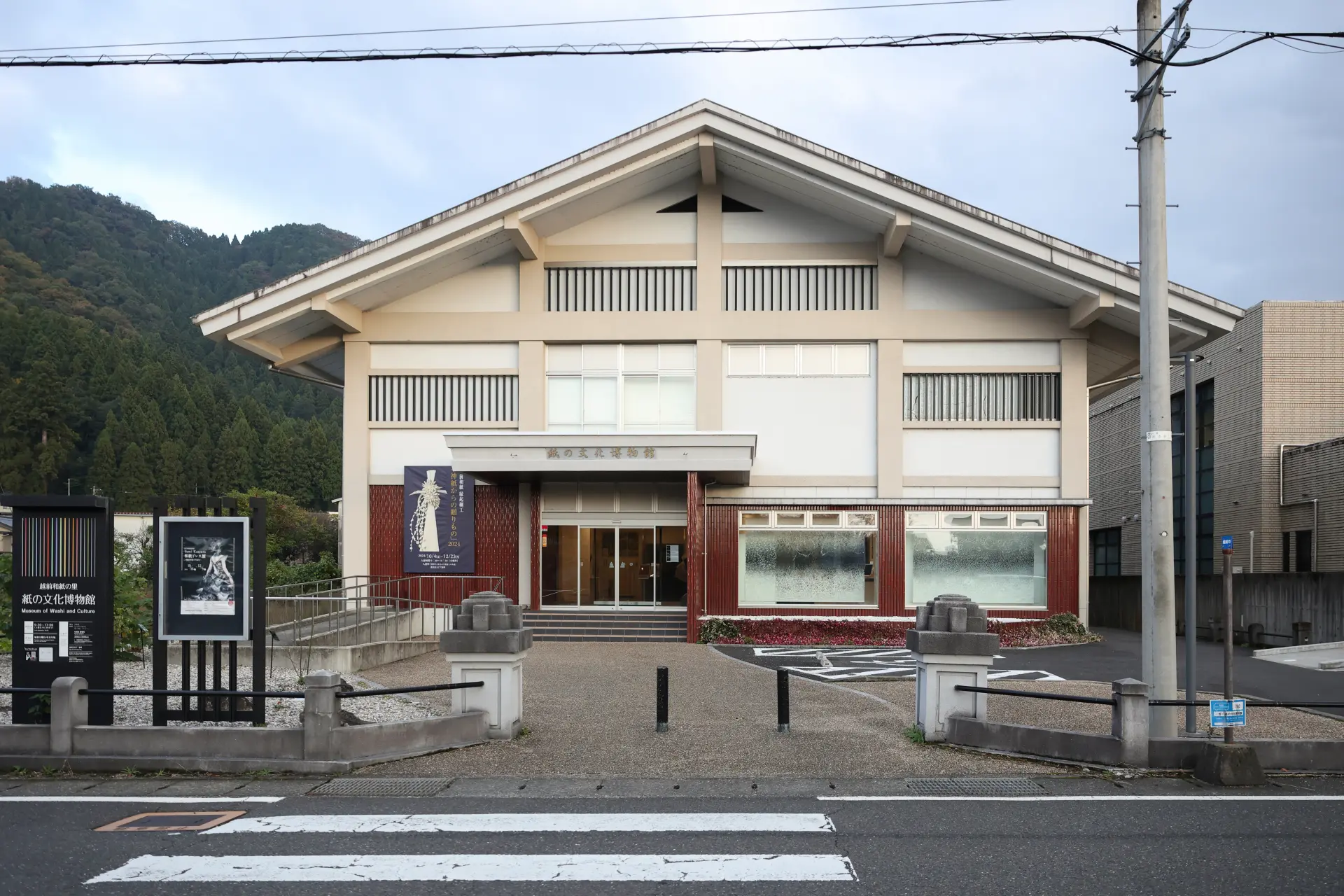
The Paper & Culture Museum, which underwent a renewal in 2017, offers an enhanced experience showcasing the rich history and craftsmanship of Echizen Washi.
After finishing lunch, we head south along Prefectural Route 198, then walk east along Hyakunen-dōri for about 15 minutes, arriving at Washi no Sato, an area dedicated to Echizen Washi with several related facilities.
On the eastern side of the charming Washi no Sato Street, we find the Paper & Culture Museum, where we can delve into the history and craftsmanship of Echizen Washi, which has been passed down for over 1,500 years.
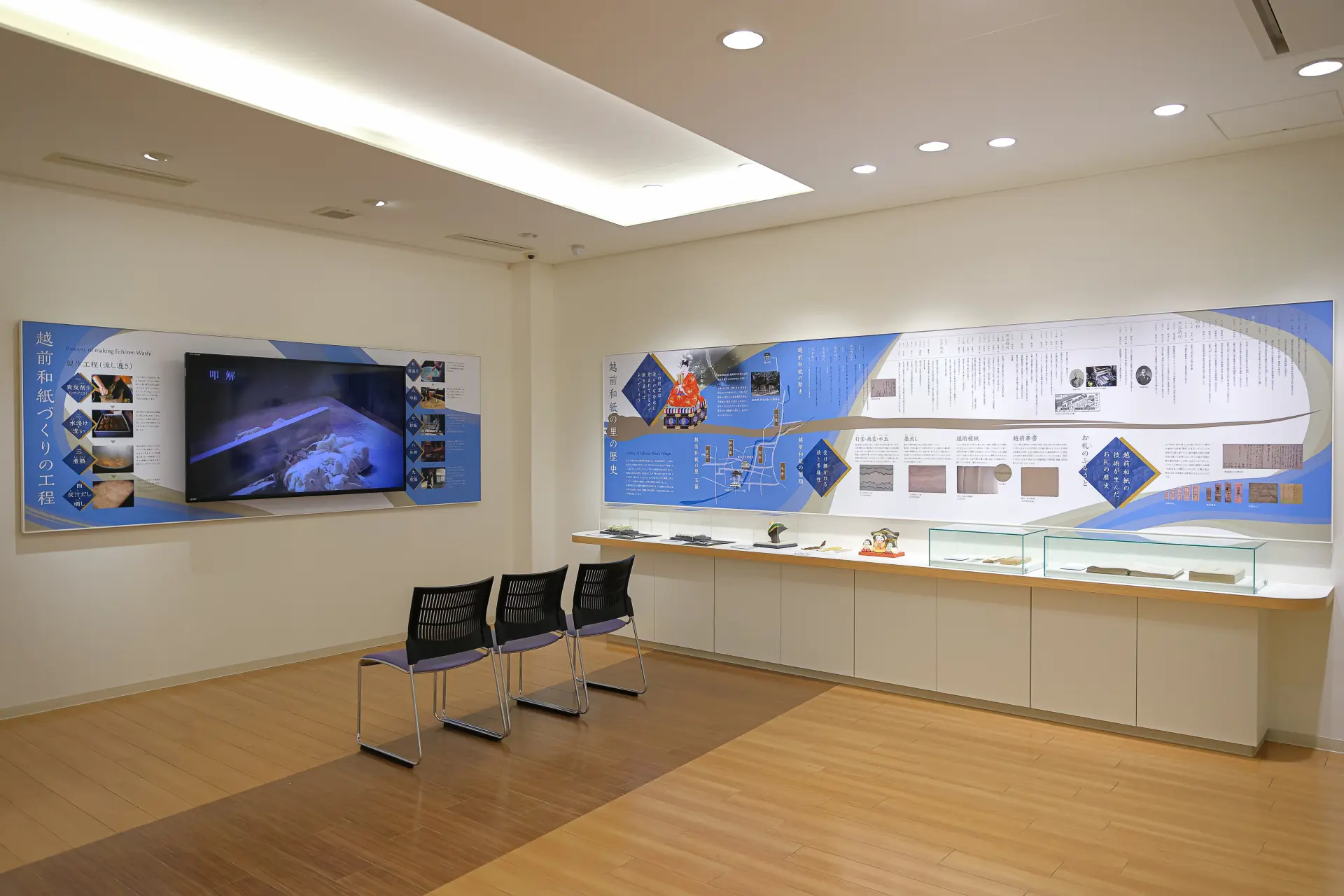
At the guidance zone located next to the entrance, visitors can learn the fundamentals of Echizen Washi through informative videos and panel displays.
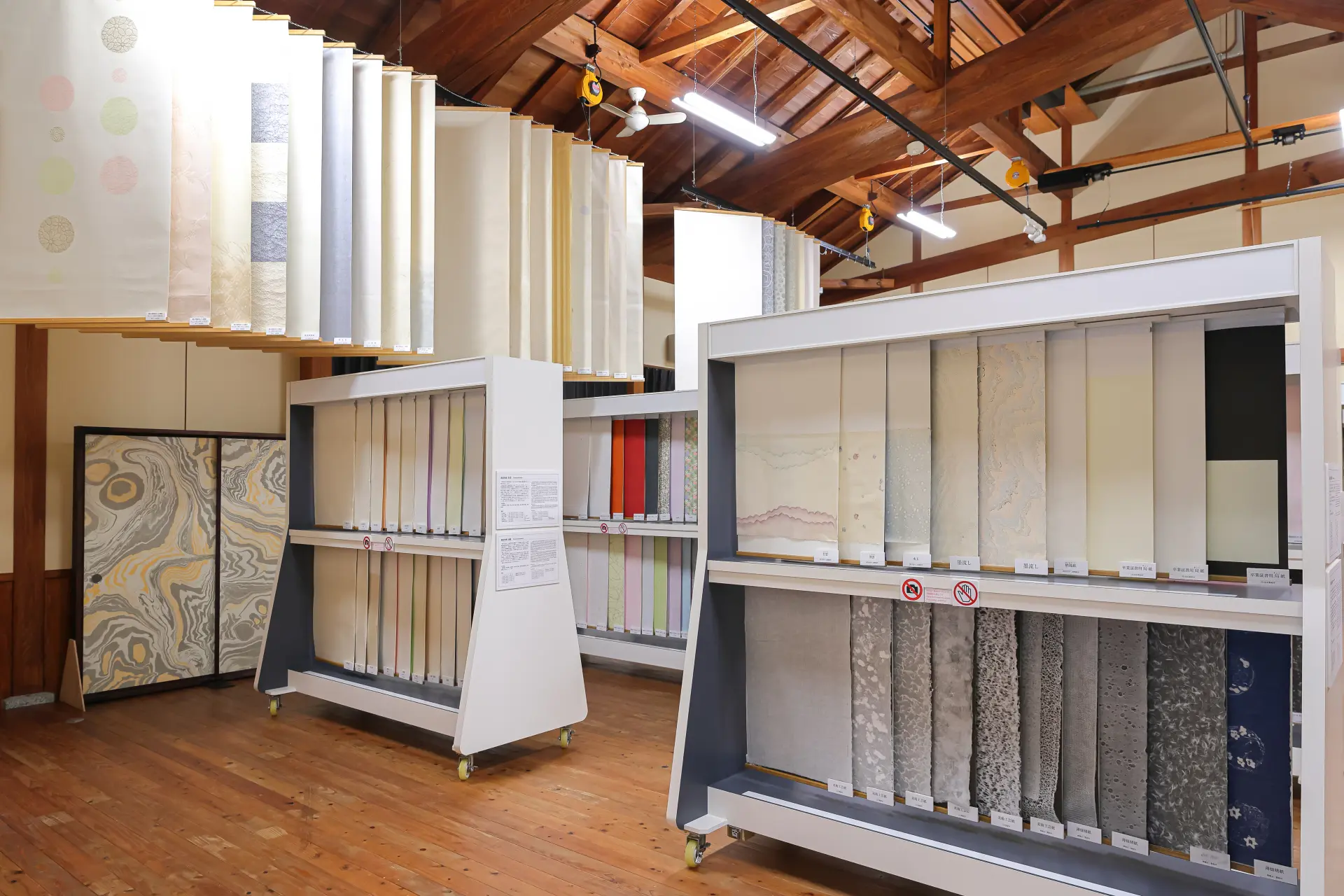
A variety of Echizen Washi crafted by local paper workshops is showcased in the exhibition, offering a glimpse into the diverse styles and techniques of traditional papermaking.
Upon entering the museum, a video corner on the left side presents the step-by-step process of washi-making. Watching this after our morning's hands-on experience deepens our understanding of the craft.
Further inside, the museum displays historical timelines, documents, and comparative charts illustrating the differences between washi (Japanese paper) and yōshi (Western paper), allowing visitors to appreciate washi from multiple perspectives.
In the annex, an extensive collection of around 360 types of washi is on display, including hōsho-gami (official document paper), torinoko-gami (high-quality paper), and kyoku-shi (luxury decorative paper), showcasing the incredible diversity of Echizen Washi.
The museum also hosts special exhibitions, where innovative works highlight the versatility and artistic potential of washi, making each visit a new and exciting discovery.
Basic Information
- Name in Japanese
- 越前和紙の里 紙の文化博物館
- Postal Code
- 915-0232
- Address
- 11-12 Shinzaikecho, Echizen City, Fukui
- Telephone
- 0778-42-0016
- Access
- From Happiline Fukui Takefu Station, take the Fukutetsu Bus Nan'etsu Line or Ikeda Line and get off at "Washi no Sato" bus stop, then walk about 3 minutes.
- Business hours
- 9:30am – 5:00pm (Admission allowed until 4:30pm)
- Admission
-
Adults 300 yen, Free for high school students and younger
Group Rate (15 or more people): 200 yen (includes admission to the Udatsu Paper & Craft Museum) - Closed
- Tuesdays, New Year holidays
- URL
- URL
3:35pm – Find the Perfect Souvenirs at "Echizen Washi no Sato Washidokoro Echizen," a Shop Full of Washi Goods!
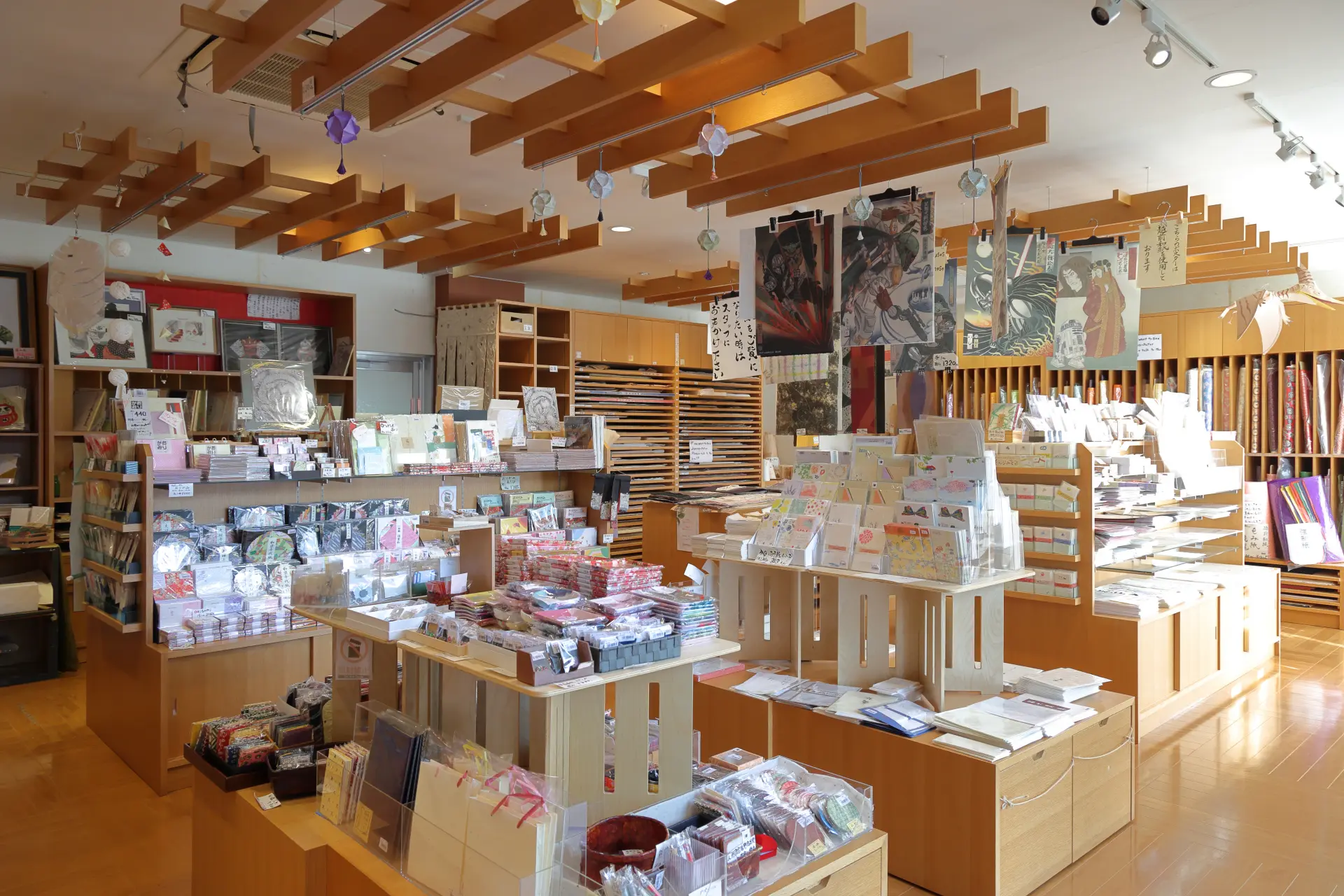
The shop is filled with a wide variety of washi paper and washi-related goods, beautifully displayed in every corner.
From the Paper & Culture Museum, we stroll westward along a stone-paved promenade, admiring the traditional houses that line the path.
At the Papyrus House’s adjoining shop, visitors can try quick and easy washi craft experiences like making a washi fan or lantern, which take 20 to 40 minutes. The shop offers a wide selection of paper products, including calligraphy and craft washi, origami paper, and decorative papers.
Beyond paper goods, the store features an extensive array of over 1,000 items, ranging from stationery such as book covers and pens, to fashion accessories like earrings, as well as homeware including coasters, folding fans, and Goshuinchō (temple stamp books). The collection even includes mask cases made from washi, ensuring that shopping here is a delightfully immersive experience.
In addition to Echizen Washi, the shop also carries washi products from other regions across Japan, making it an ideal spot for souvenir shopping with a diverse range of choices.
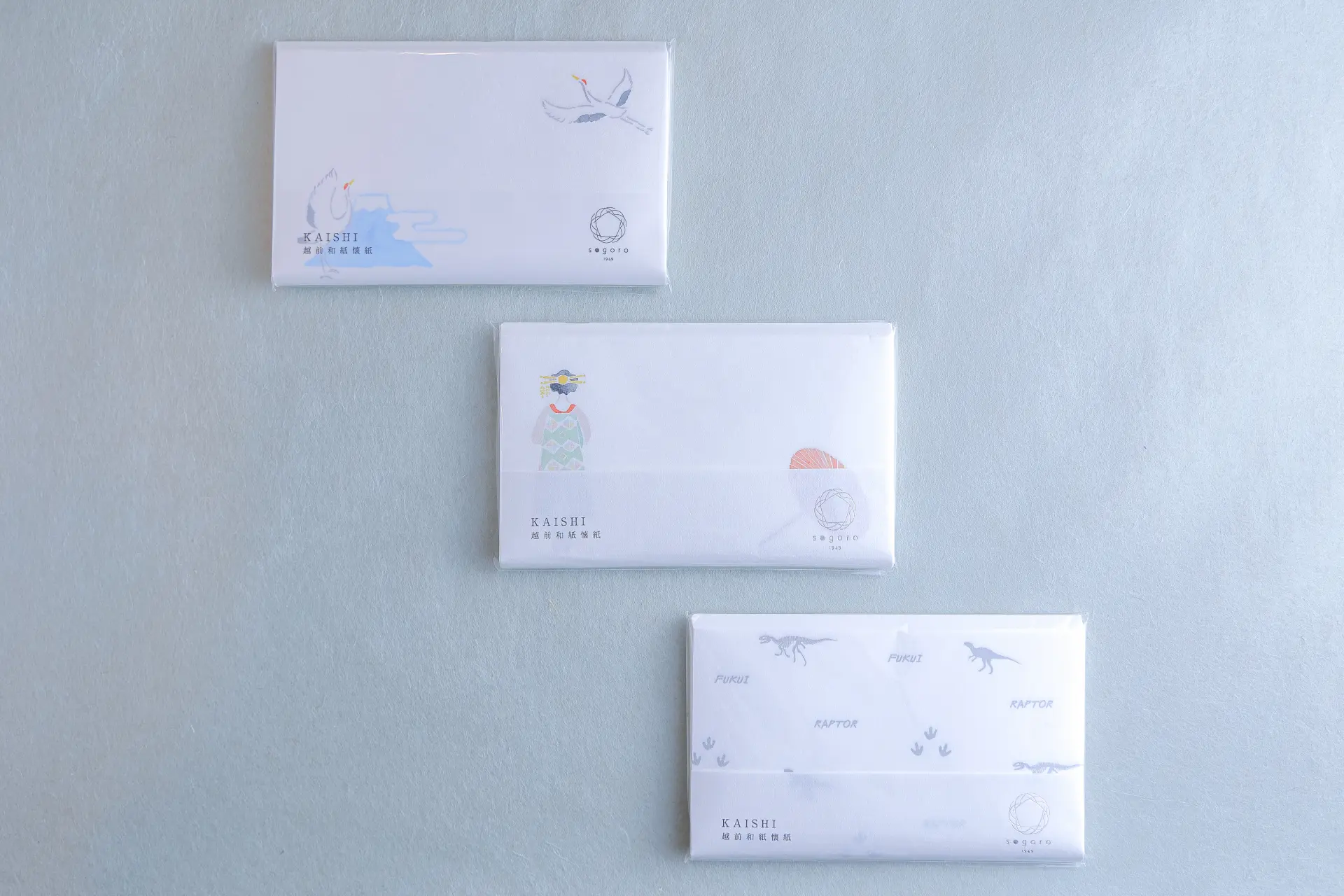
Echizen Washi Kaishi (multi-purpose paper) available from 242 yen~.
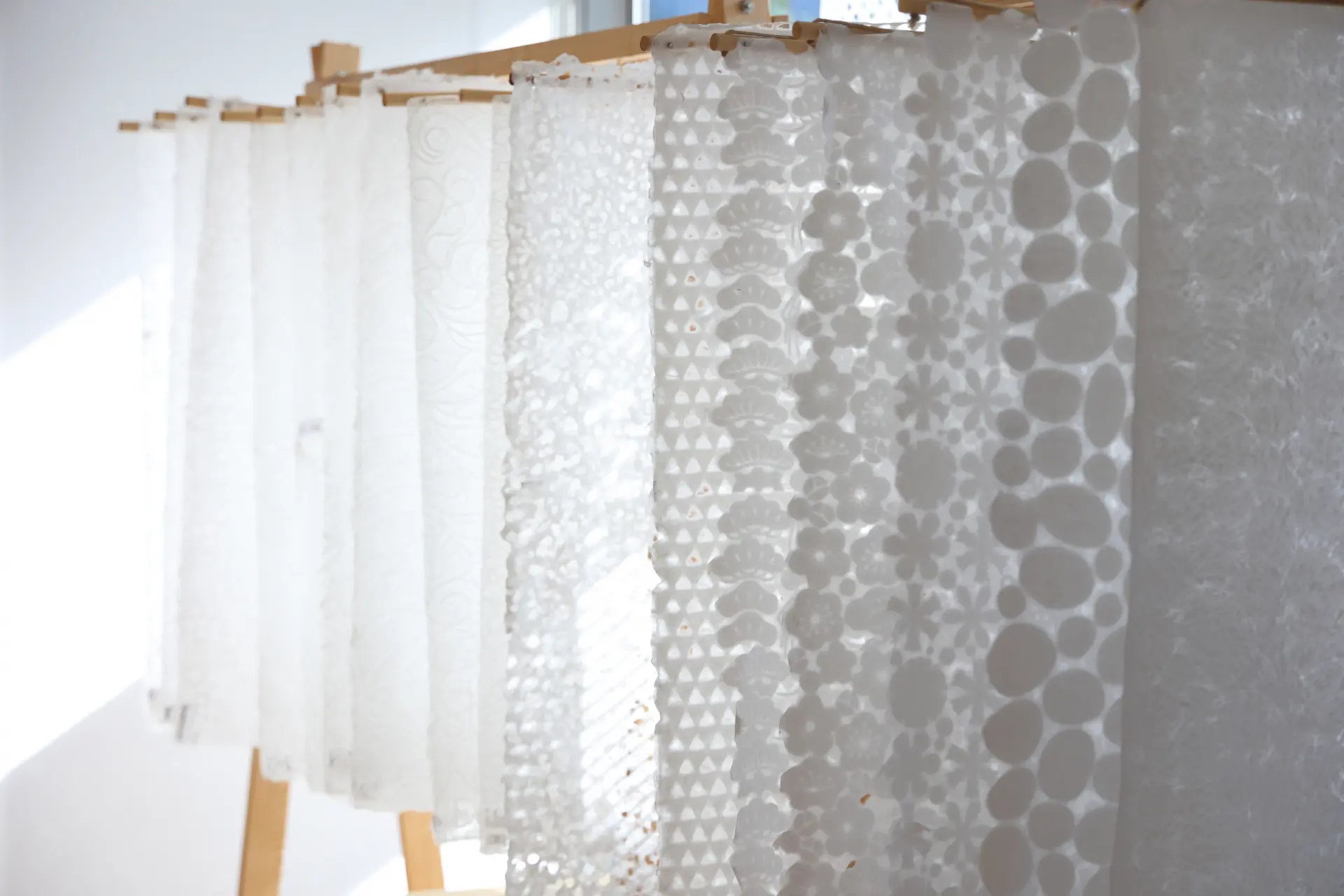
In addition to colorful washi, the shop also offers patterned washi, providing a wide variety of designs to choose from.
Basic Information
- Name in Japanese
- 越前和紙の里 和紙処えちぜん
- Postal Code
- 915-0232
- Address
- Inside Papyrus House 8-44 Shinzaikecho, Echizen City, Fukui
- Telephone
- 0778-42-1363
- Access
- Approximately 2-minute walk from "Washi no Sato" bus stop.
- Business hours
- 9:00am – 4:00pm
- Admission
- Free
- Closed
- Tuesdays (open on National Holidays), New Year holidays
- URL
- URL
5:00pm – Enjoy Exquisite Cuisine at "Echizen Kyo Yorozu," a Tranquil Inn Surrounded by Traditional Craftsmanship
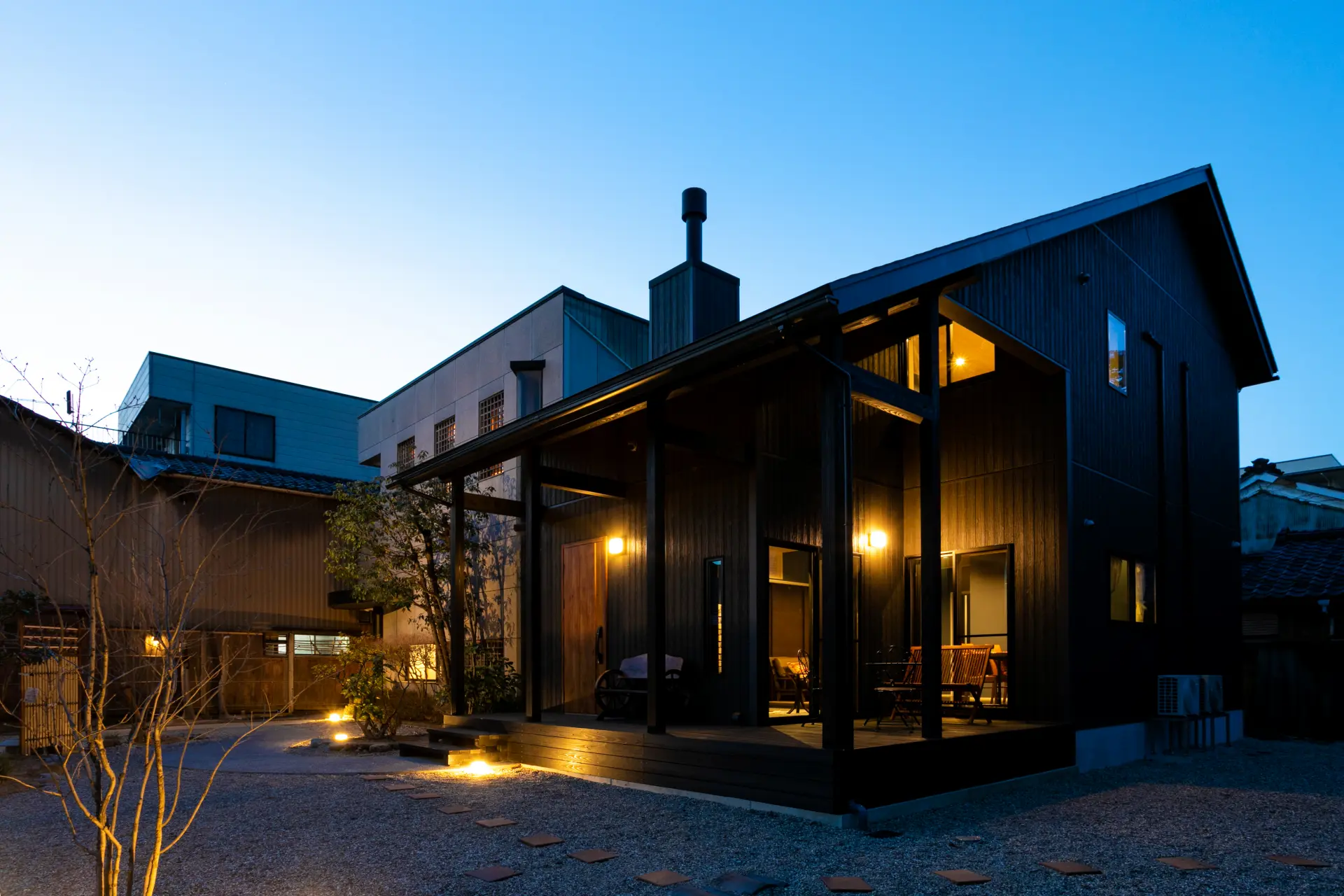
The private villa "Bettei Kyo Yorozu" offers a spacious 93-square-meter retreat, providing an exclusive and tranquil stay.
From Washi no Sato Bus Stop, we take the Fukutetsu Bus Nan'etsu Line, riding for about 25 minutes before getting off at Echizen City Hall. From there, a 7-minute walk brings us to tonight’s accommodation, Echizen Kyo Yorozu.
The inn offers three room types, including two Japanese-Western style rooms and the modern private villa "Bettei Kyo Yorozu", which features a wood-burning stove and an expansive 93-square-meter space. Every room is adorned with Echizen’s traditional crafts, such as Echizen Washi and Echizen Pottery, creating a refined and relaxing Japanese atmosphere. While appreciating the beauty of these crafts, guests can unwind in comfortable beds and sofas, enjoying a truly luxurious and tranquil stay.
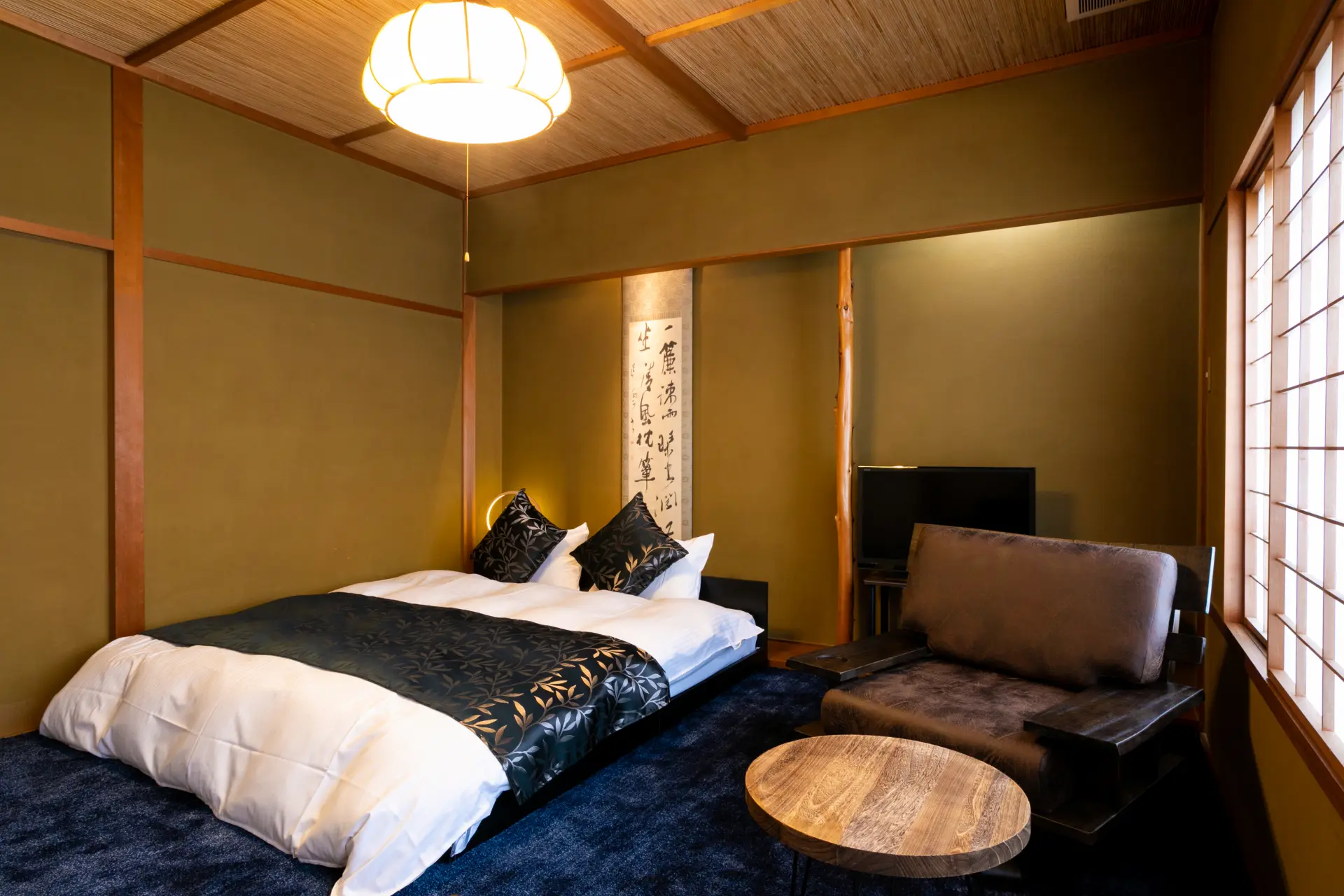
The Japanese-Western style room "Zen" features a beautifully displayed hanging scroll (kakejiku), allowing guests to immerse themselves in a traditional Japanese atmosphere while enjoying modern comforts.
After a short rest, it's time for the much-anticipated dinner. The meal is a masterfully crafted Japanese course that showcases the culinary expertise of a long-established ryotei and the exceptional local ingredients of Echizen.
Every detail reflects the region’s rich craftsmanship, from the Echizen Washi decorations to the Echizen Pottery tableware, enhancing the dining experience. The dishes, meticulously prepared with seasonal ingredients, offer a delicate and refined taste, engaging all five senses.
Surrounded by exquisite Japanese craftsmanship, we indulge in this unforgettable gastronomic experience, recharging for the next day's journey.
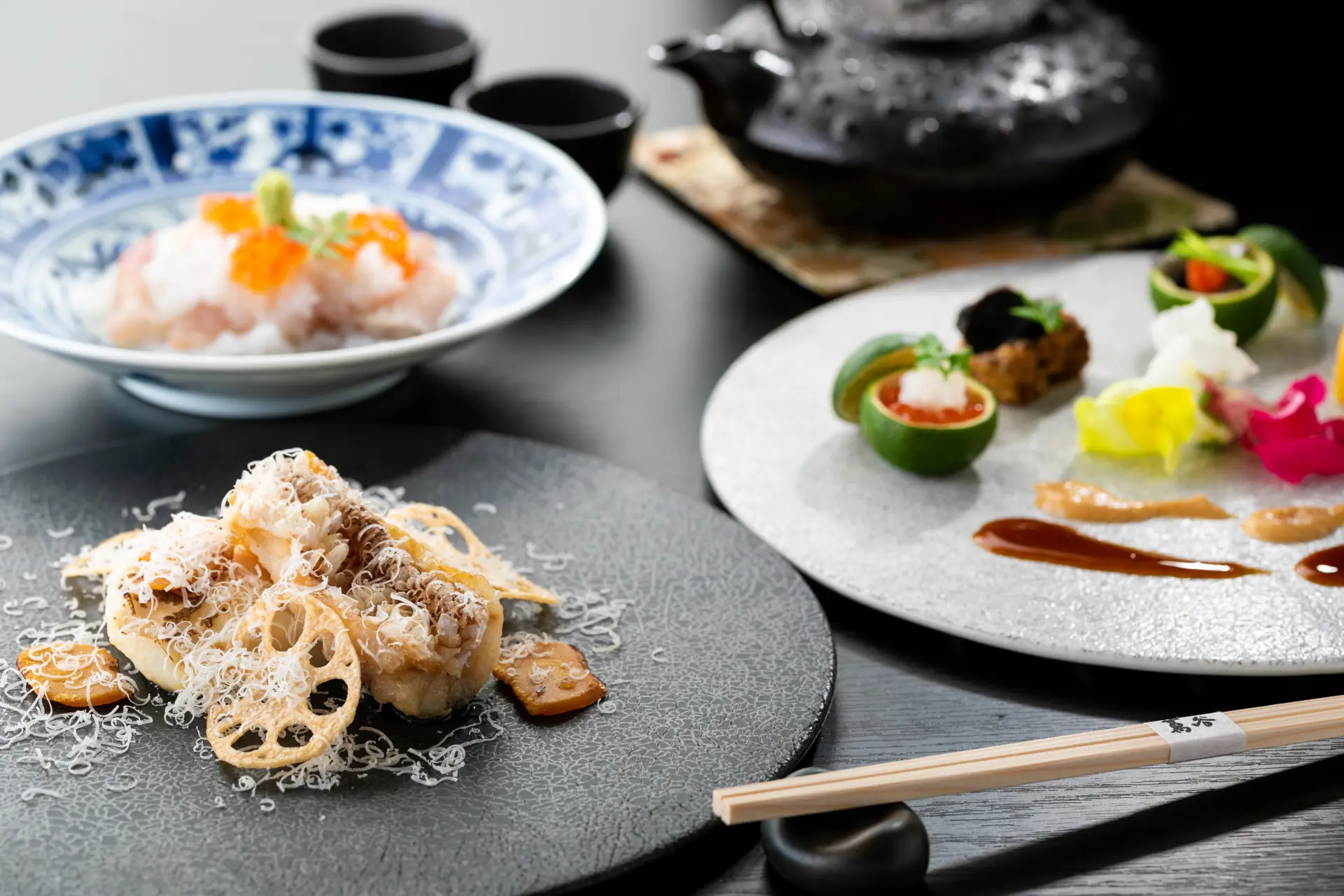
The meal features seasonal seafood from the Sea of Japan, including tilefish (amadai) and the renowned Echizen crab (Echizen-gani), ensuring a fresh and exquisite dining experience.
Basic Information
- Name in Japanese
- Echizen京よろず
- Postal Code
- 915-0813
- Address
- 3-1-3 Kyomachi, Echizen City, Fukui
- Telephone
- 0778-24-0808
- Access
- Approximately 10-minute walk from Happiline Fukui Takefu Station
- Hours
- Check-in 3:00pm ~ / Check-out by 10:00am
- Accommodation Fee
- From 30,250 yen per person (including one night’s stay with two meals)
- Closed
- Irregular holidays
- URL
- URL
DAY2
9:30am – Depart from Echizen Kyo Yorozu
The second day's destination, Sabae, the city of eyeglasses, is easily accessible. From the inn, it's a 10-minute walk to Happiline Fukui Takefu Station, where a 5-minute train ride brings us to Sabae.
With over 90% of Japan’s eyeglass frames produced here, Sabae is a town deeply rooted in eyewear craftsmanship. Now, it’s time to explore this fascinating town, known for its world-class optical industry.
9:50am – Strolling Through "Megane Street," a Playful Exploration of Eyewear Culture
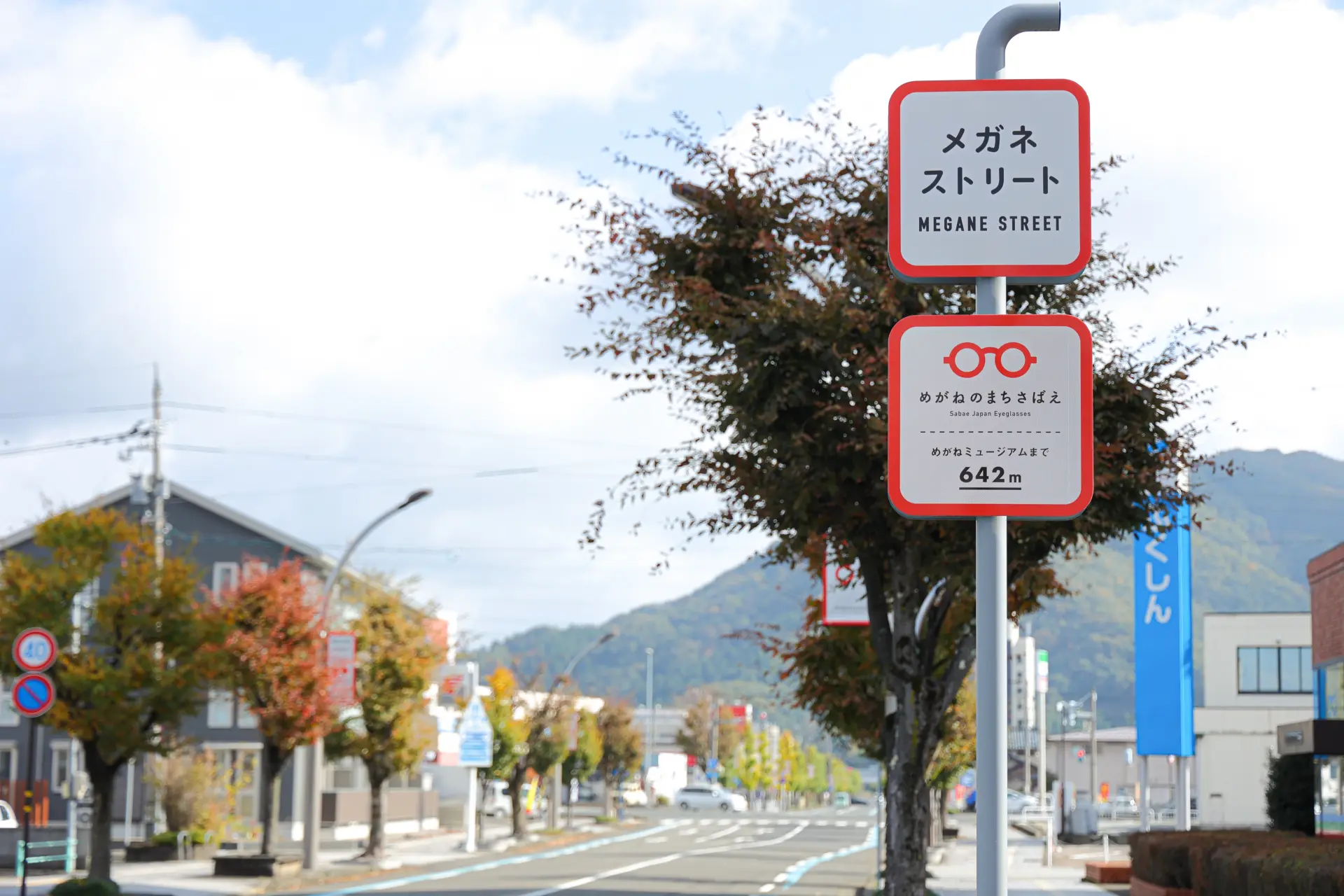
Megane Street stretches approximately 900 meters from Sabae Station to the Megane Museum.
The road from Happiline Fukui Sabae Station to our next destination, the Megane Museum, is known as "Megane Street", a lively walkway filled with unique and playful eyewear-themed features.
As we pass through the underground passage beneath the railway, we notice numerous eyeglass engravings on the stairs. Emerging from the passage, we are greeted by bollards wearing eyeglasses, giving them a charming, character-like appearance.
Beyond that, we encounter eyeglass-shaped benches, manhole covers, and signboards, some of which are instantly recognizable, while others are cleverly hidden, waiting to be discovered. As we stroll along, enjoying these whimsical details, we make our way toward the Megane Museum, fully immersed in Sabae's eyewear culture.
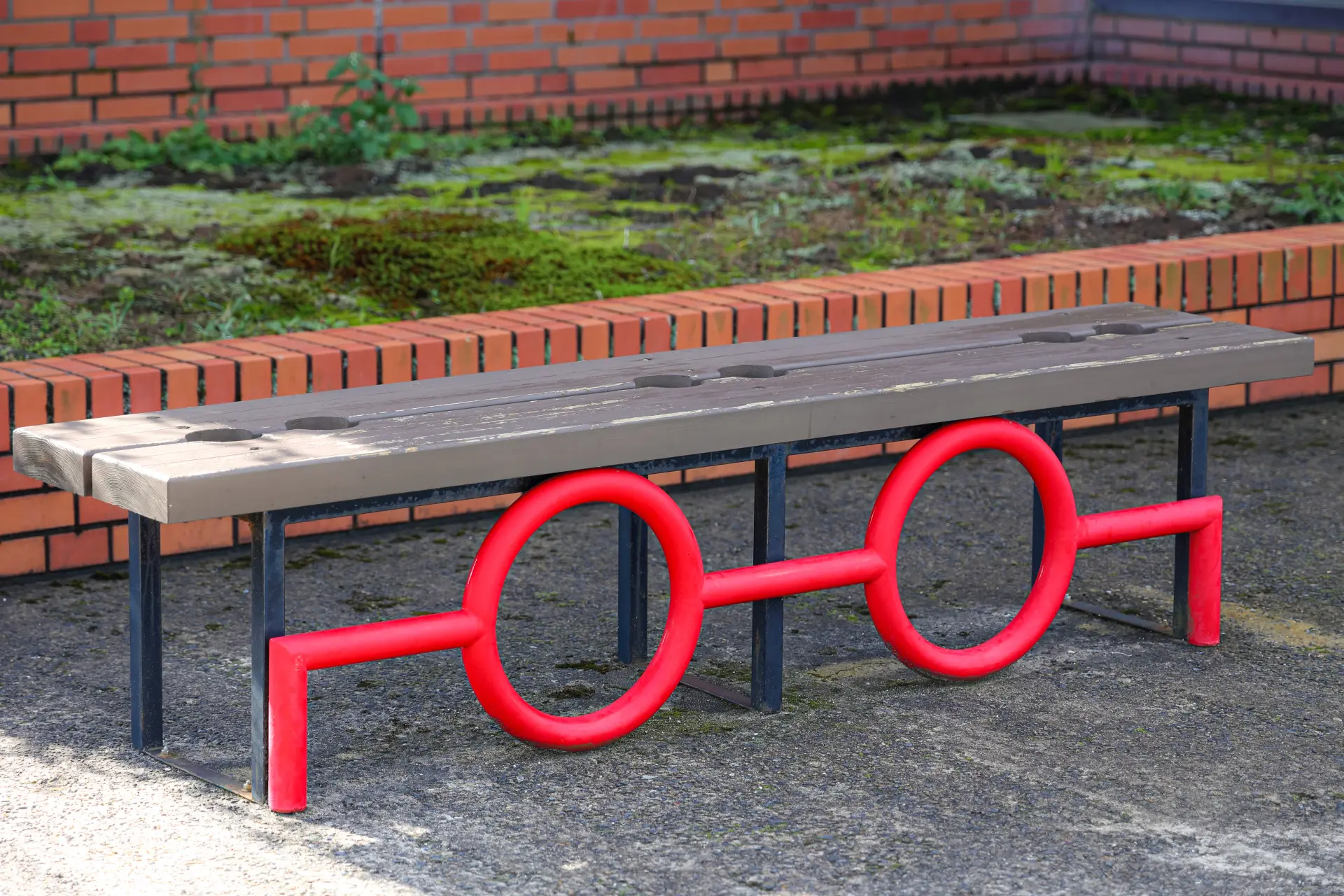
We spot a red round pair of eyeglasses cleverly incorporated into the bench supports. Searching for these hidden details makes the stroll even more enjoyable.
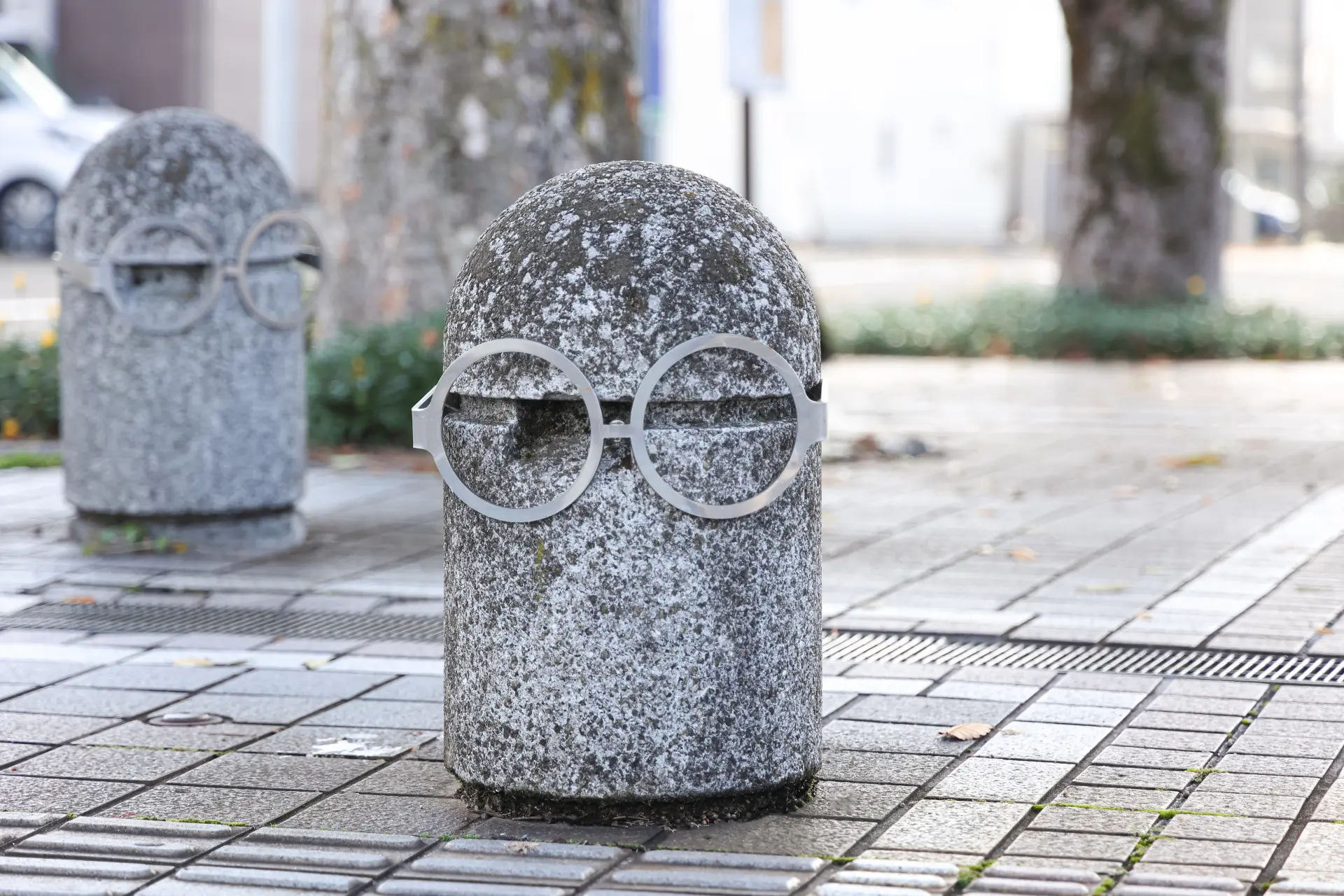
A bollard wearing eyeglasses stands along the path. Just by adding glasses, it somehow looks a bit more stylish!
Basic Information
- Name in Japanese
- メガネストリート
- Postal Code
- 520-1833
- Address
- Shinyokoe to Hinodecho, Sabae City, Fukui
- Access
- Just a short walk from Happiline Fukui Sabae Station.
- Hours
- Walk anytime
- Admission
- Free
- Closed
- Free to walk
- URL
- URL
10:20am – Explore the Eyewear Theme Park "Megane Museum," Where You Can See, Touch, and Learn
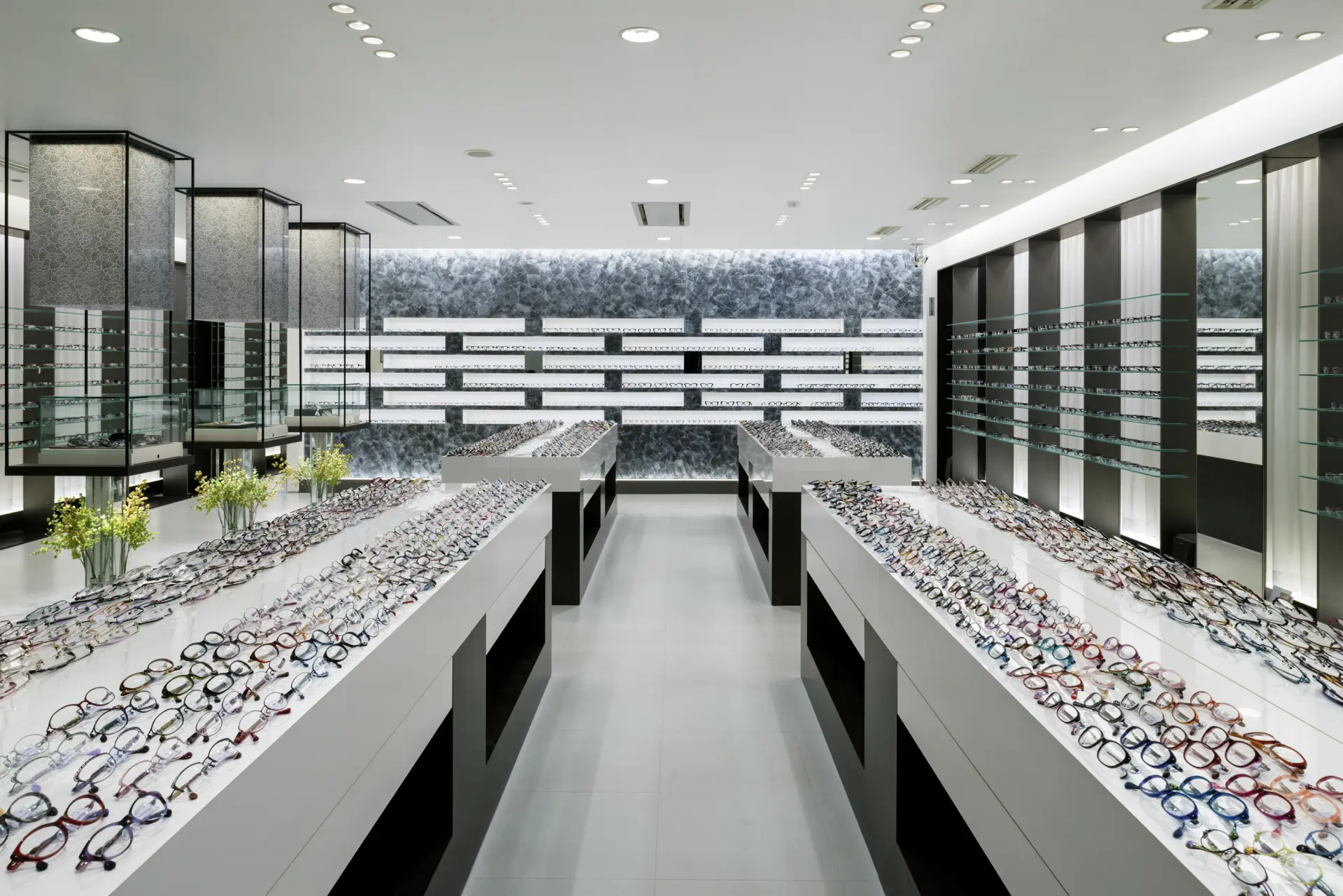
The Megane Shop features around 130 brands from local eyeglass frame manufacturers, offering a wide selection of high-quality eyewear.
After strolling along Megane Street, we arrive at the Megane Museum. Having been so engrossed in spotting all the playful eyeglass-themed features along the way, we decide to take a short break at MUSEUM CAFE on the second floor.
We order a cup of specialty coffee, carefully selected by a local roastery in Echizen City, exclusively for MUSEUM CAFE. To accompany it, we indulge in cakes and jellies crafted by a local sweets shop, enjoying a moment of relaxation before diving into the world of eyewear.
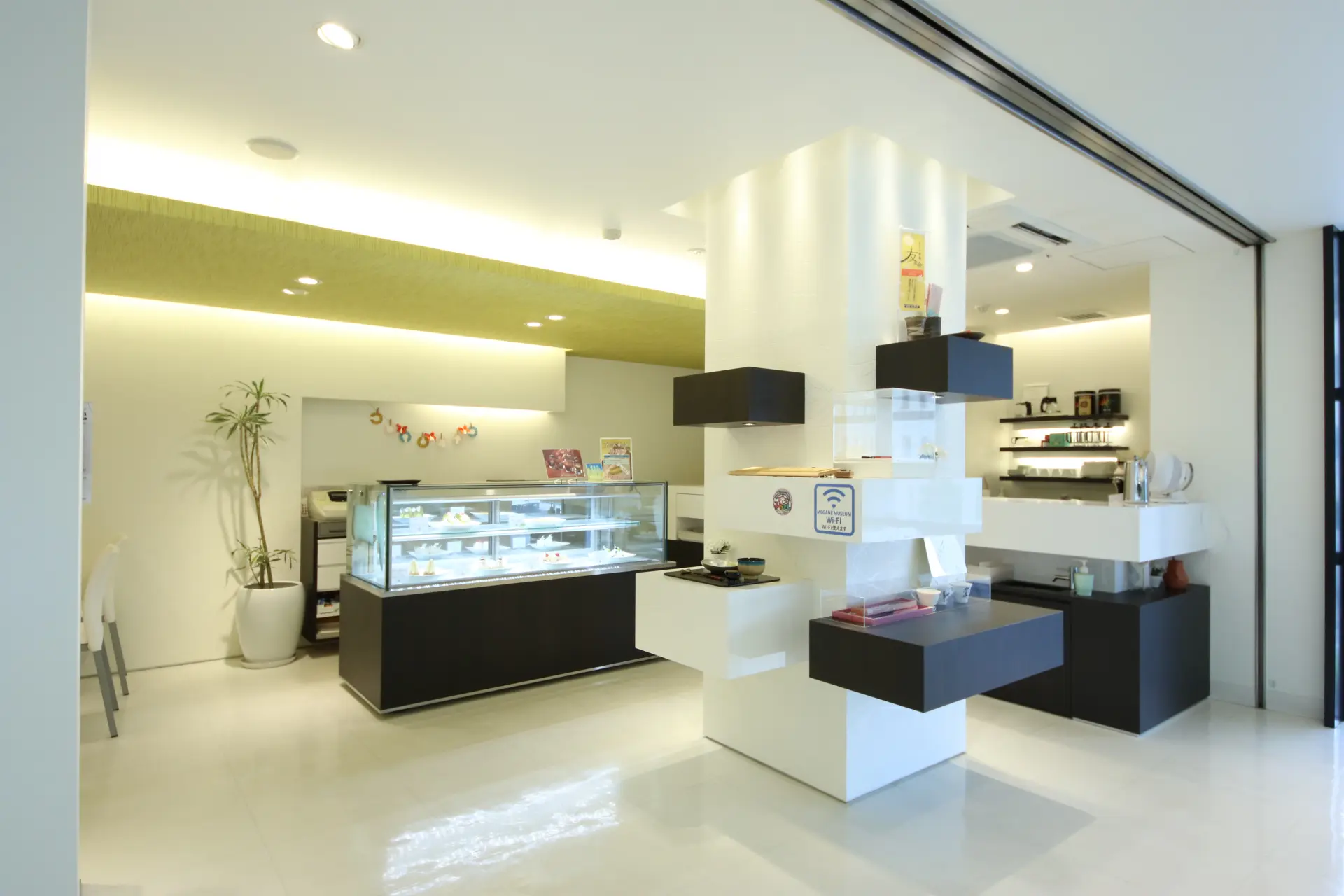
The cakes served at the café change weekly, offering a variety of delightful flavors to enjoy with each visit.
After a refreshing break, we head to the first floor to explore the Megane Museum. The exhibits showcase over 100 years of eyewear history, featuring tools used in eyeglass-making, along with a "Famous People’s Eyewear Collection", which displays glasses once worn by renowned Japanese figures—a truly exciting sight.
Beyond the historical exhibits, the museum also houses a shop displaying and selling the latest models from around 50 eyewear-related companies in Fukui Prefecture. For those looking for a hands-on experience, a workshop (reservation required) allows visitors to create their own eyewear, making this museum a must-visit destination filled with fascinating insights and activities.
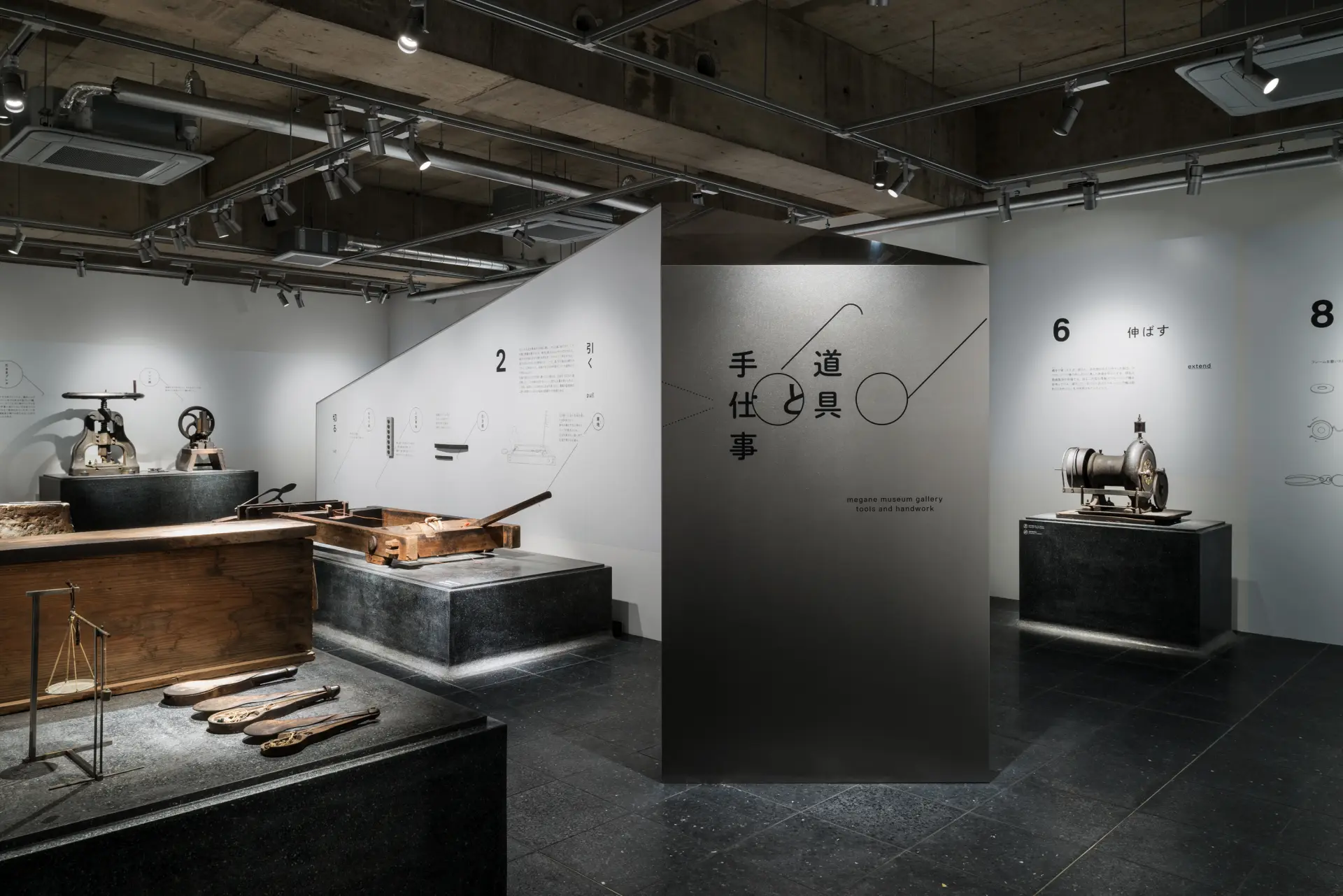
At the museum, visitors can also learn about the evolution of eyeglasses from the Edo period to the Meiji era, gaining insight into how designs and craftsmanship have changed over time.
Basic Information
- Name in Japanese
- めがねミュージアム
- Postal Code
- 916-0042
- Address
- 2-3-4 Shinyokoe, Sabae City, Fukui
- Telephone
- 0778-42-8311
- Access
- Approximately 10-minute walk from Happiline Fukui Sabae Station.
- Business Hours
-
10:00am - 5:00pm
MUSEUM CAFE 10:00am - 4:00pm
Megane Shop 10:00am - 9:00pm - Admission
- Free
- Closed
- Wednesdays (open on National Holidays), New Year holidays
- URL
- URL
12:15pm – Lunch at "Kamameshi Senmonten Kamakura," a Specialty Restaurant Showcasing Seasonal Seafood from the Sea of Japan
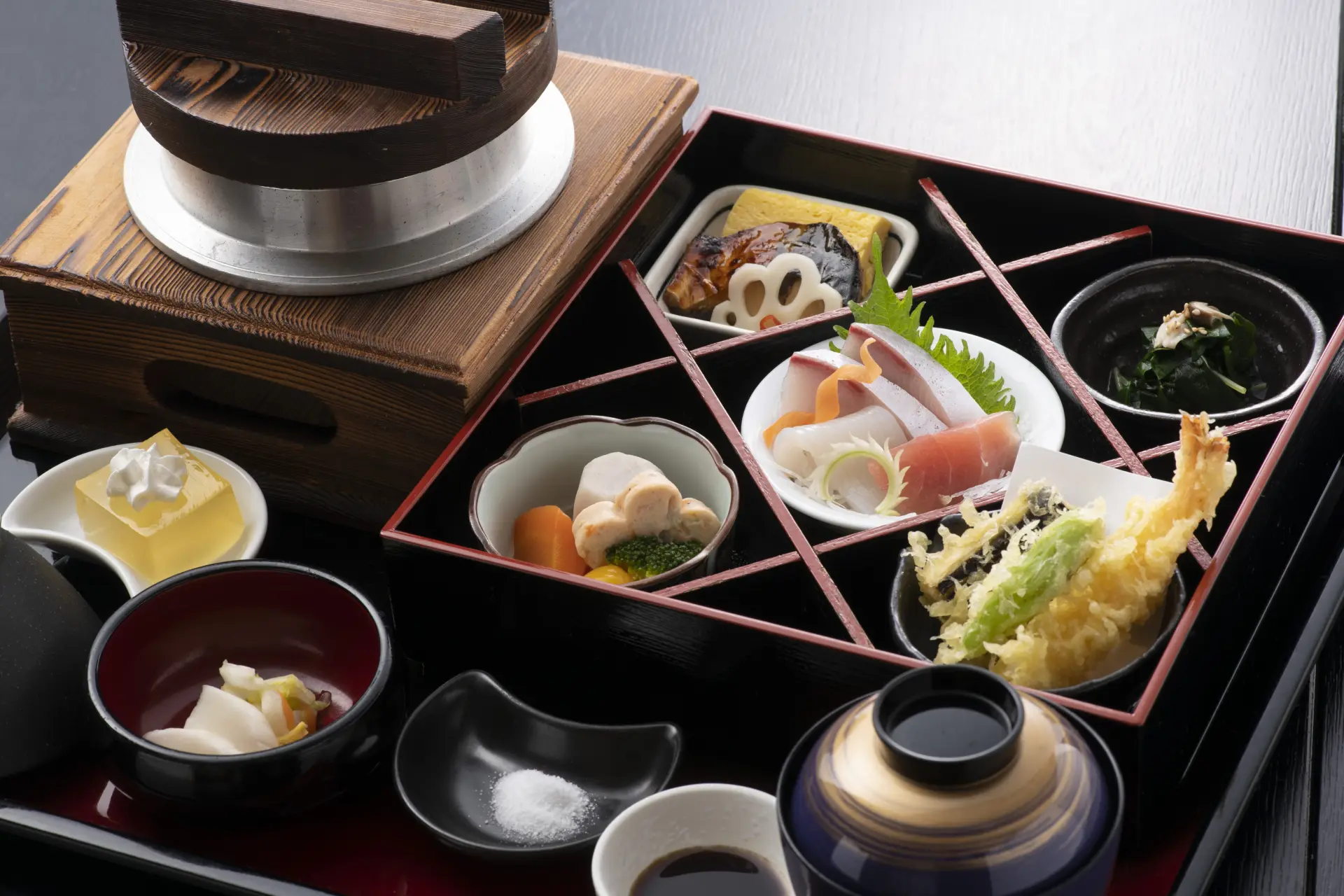
The Kamameshi Lunch Set features a mountain vegetable kamameshi (rice cooked in an iron pot), accompanied by sashimi and tempura, offering a delightful taste of seasonal flavors.
After exploring the Megane Museum, we head back towards Sabae Station, walking north along National Route 8 for about 8 minutes to reach a specialty kamameshi restaurant for lunch.
This kamameshi (iron pot rice) is made using 100% Fukui-grown Koshihikari rice, combined with fresh local seafood and seasonal ingredients. Each dish is cooked to order, ensuring the rice is fluffy and steaming hot, allowing the natural flavors of the ingredients to shine.
The menu highlights Fukui’s culinary specialties, such as Echizen crab and grilled mackerel, while also offering seasonal delights. In spring, there’s sea bream and bamboo shoots, in summer, sweetfish and eel, in autumn, matsutake mushrooms, grilled salmon, and salmon roe, and in winter, Seiko crab and oysters. With limited-time seasonal menus, this is a place worth visiting again and again.
We savor the fragrant, umami-rich kamameshi, expertly cooked with their secret dashi broth, making for an unforgettable meal.
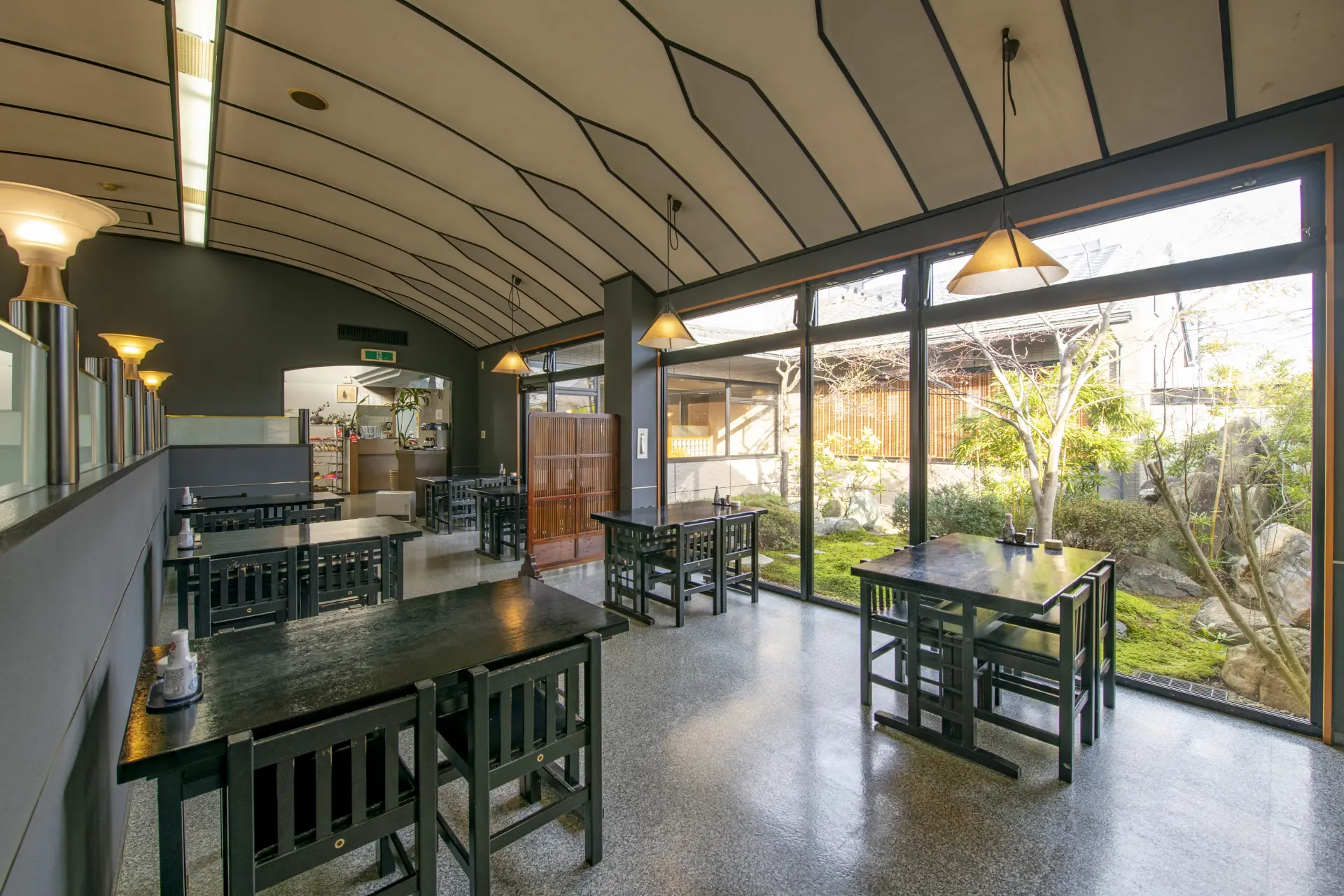
The restaurant features table seating with large windows overlooking the garden, as well as raised tatami seating, providing a cozy and traditional dining experience.
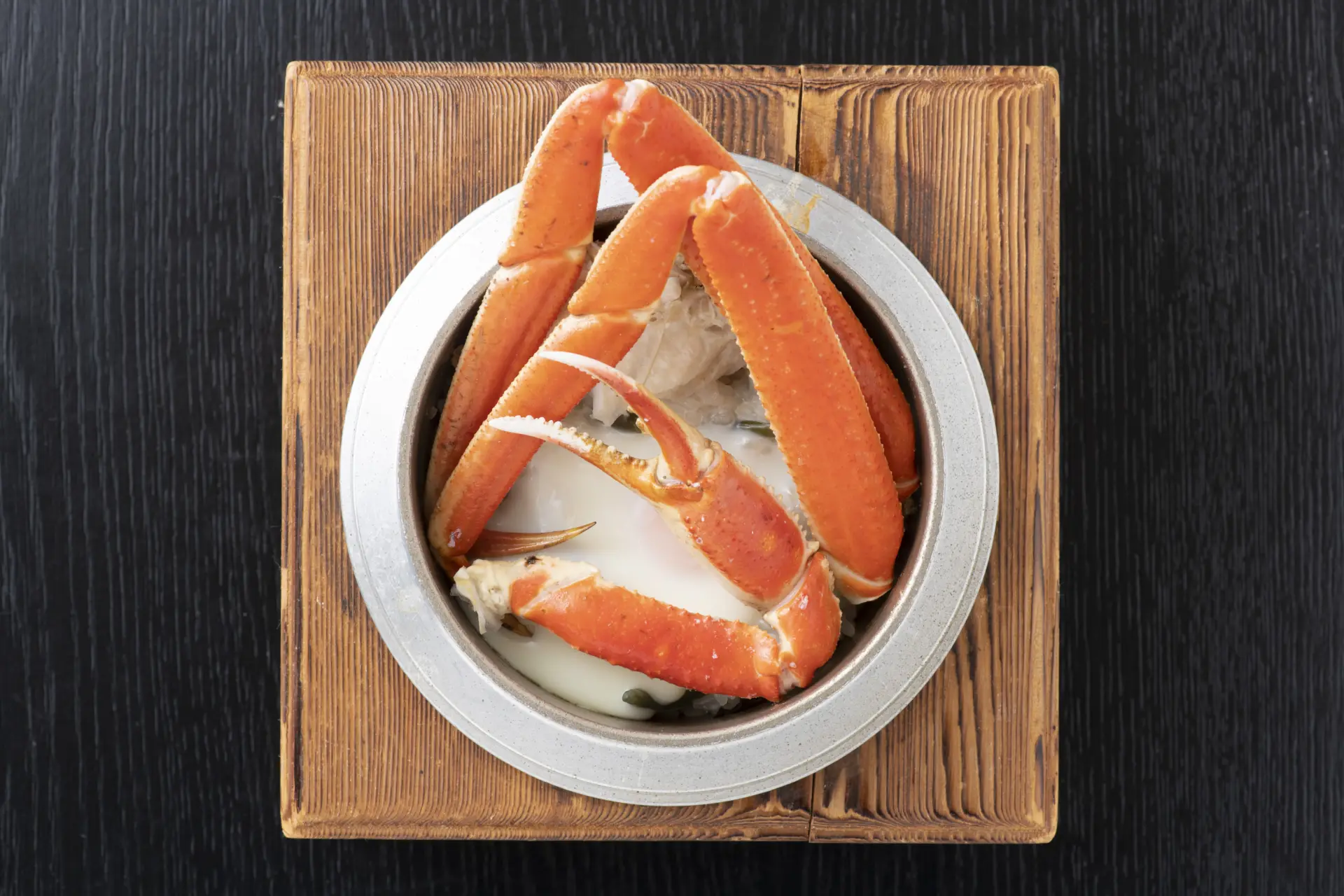
The crab kamameshi, featuring Echizen crab (subject to availability), is a standout dish. The crab legs dramatically extend beyond the pot, making for a visually impressive and indulgent meal.
Basic Information
- Name in Japanese
- 釜めし専門店 釜蔵
- Postal Code
- 916-0047
- Address
- 4-521 Yanagimachi, Sabae City, Fukui
- Telephone
- 0778-52-2846
- Access
- Approximately 10-minute walk from Happiline Fukui Sabae Station.
- Business Hours
-
11:00am - 2:00pm, 5:00pm - 9:00pm,
Weekends and holidays 11:00am - 3:00pm, 5:00pm - 9:00pm
(L.O.8:45pm, Kamameshi Last Order 8:30pm) - Closed
- Wednesdays (open on National Holidays), New Year holidays
- URL
- URL
3:00pm – Create Your Own Custom Sunglasses! "Choose from 300 Types of Lenses" for a Personalized Eyewear Experience
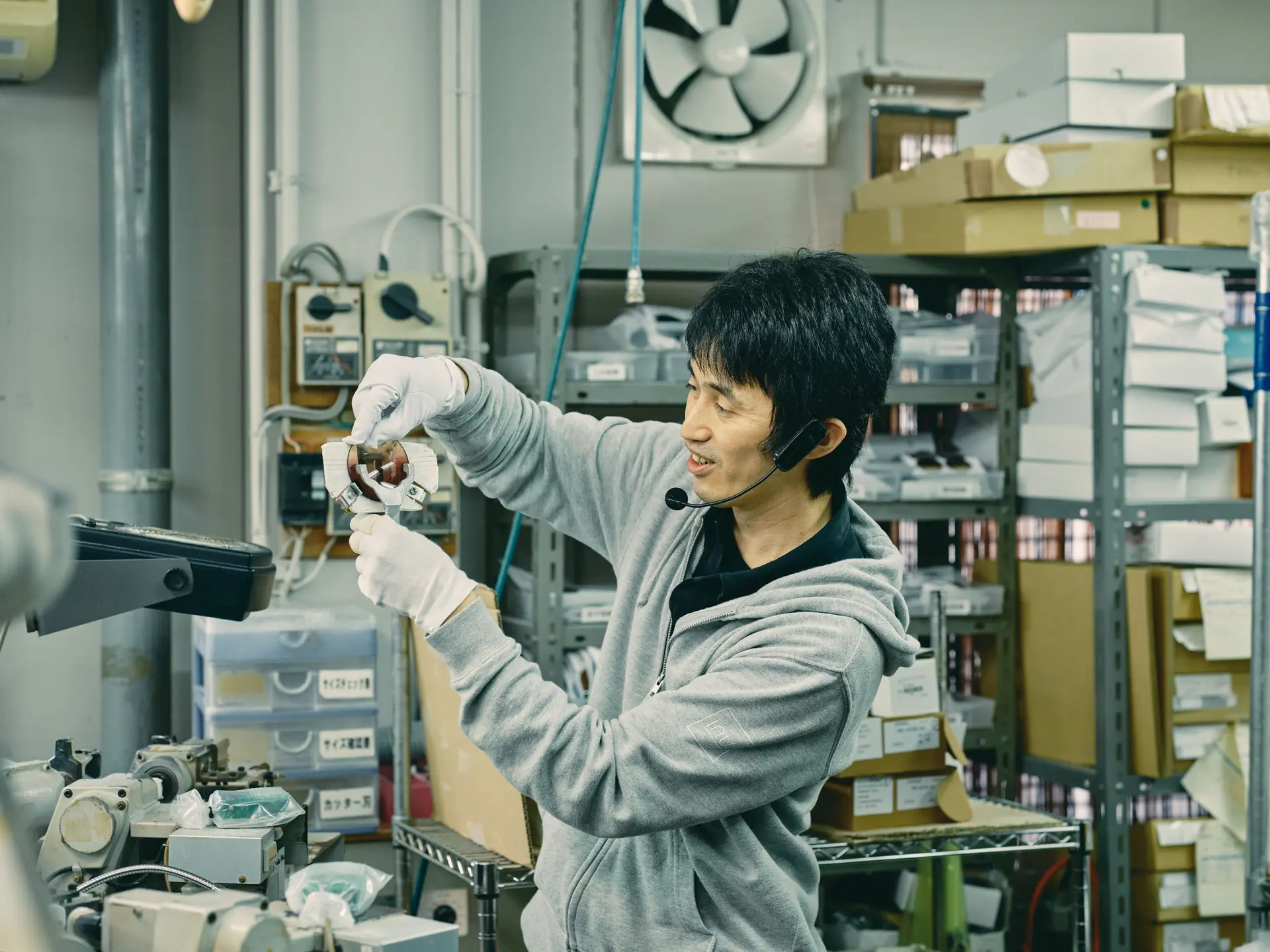
Tsutomu Ogino(TOMART:PhotoWorks)
Observe the lens-making process, where lenses are crafted in various shapes and styles to match the diverse selection of eyeglass frames.
After lunch, we head to Sabae Station to catch the 2:00pm Tsutsuji Bus bound for Shinmei Station. After a 20-minute ride, we get off at Fukushin Shinmei Branch bus stop and walk about 12 minutes to our next destination.
This is Lens Park, operated by Inui Lens, a company that has been manufacturing sunglass lenses and planning its own brand since 1953. Here, visitors can create their own custom sunglasses.
The experience begins with a fun experiment, demonstrating how sunglasses protect the eyes and educating visitors on the science behind lenses. Next, we tour the sunglass production factory, getting an exclusive look at a process usually unseen by the public.
Finally, it’s time for the exciting hands-on experience of crafting our own custom sunglasses. We select from about 300 types of lenses, including those used by famous brands, carefully choosing the perfect match for our brought-in eyeglass frames. The anticipation builds as we customize our own unique pair.
To top it all off, after the experience, guests are treated to a complimentary soft-serve ice cream or specialty coffee, making for a satisfying and memorable visit.
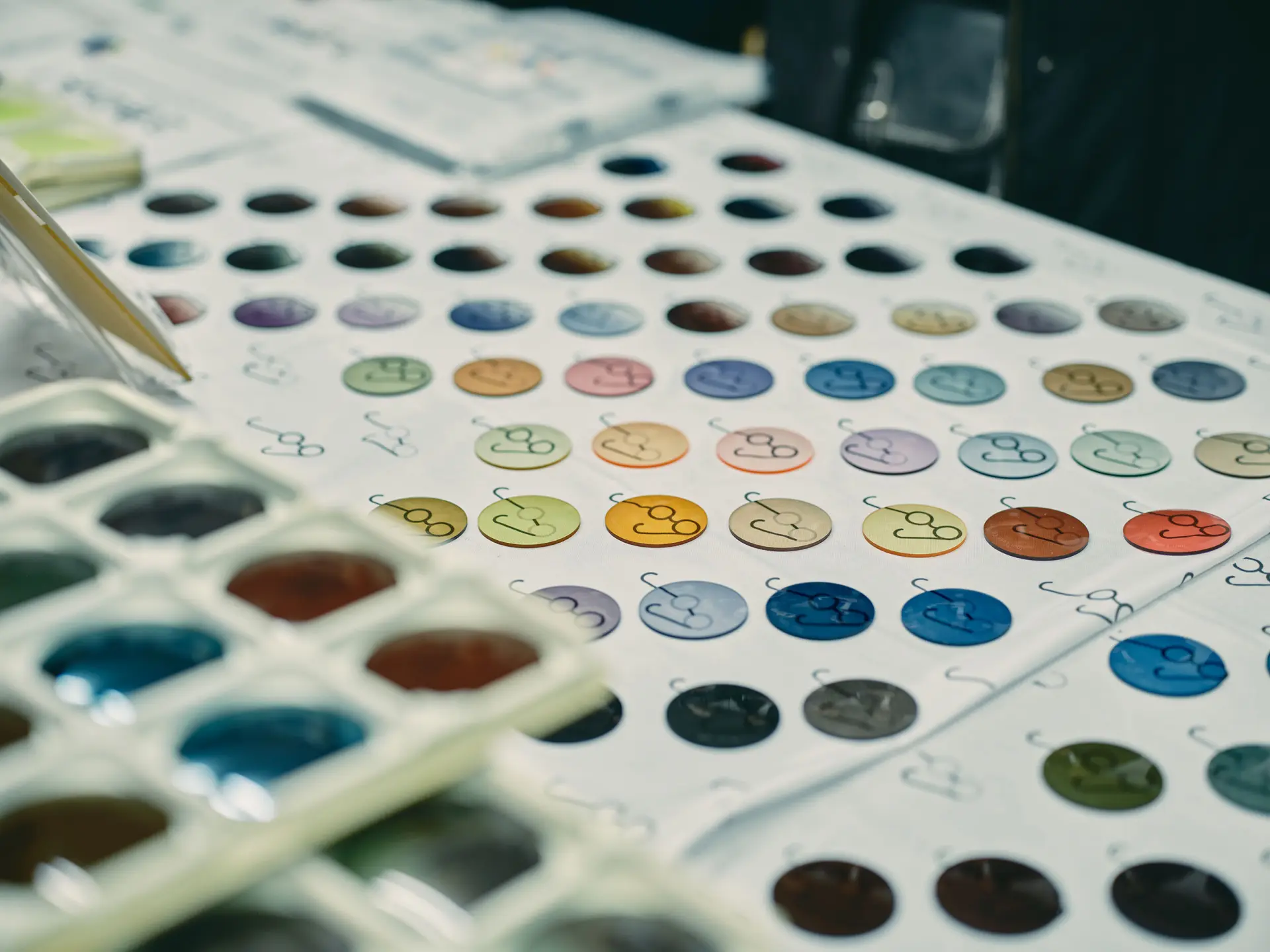
Tsutomu Ogino(TOMART:PhotoWorks)
Seeing around 300 types of lenses lined up is truly impressive. With so many options available, take your time to carefully choose the perfect one.
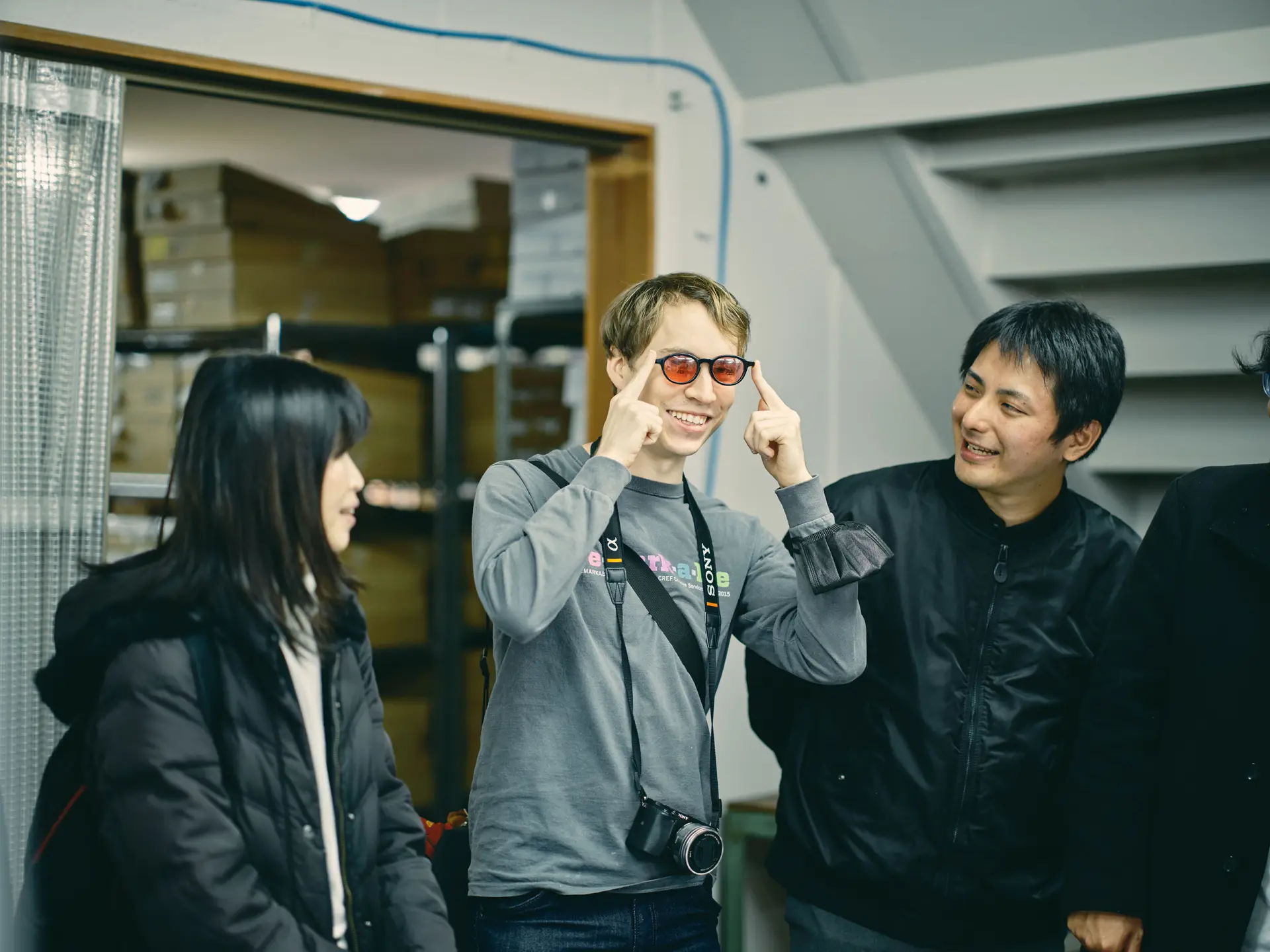
Tsutomu Ogino(TOMART:PhotoWorks)
Once you install your chosen lenses, your one-of-a-kind custom sunglasses are complete—truly unique in the world.
Basic Information
- Name in Japanese
-
約300種類のレンズから選ぶ マイサングラス作り体験
Choose from around 300 types of lenses and experience making your own unique sunglass - URL
- URL
Wrap-up
A journey through Echizen Washi, with its 1,500-year history, and Sabae’s world-renowned eyeglass craftsmanship offers an immersive experience into two of Japan’s most distinguished traditional industries.
By joining a guided tour, visitors gain exclusive access to workshops and factories, usually closed to the public, and have the rare opportunity to learn directly from skilled artisans. Stopping by related facilities further deepens the understanding of Echizen Washi and Sabae eyewear, revealing their craftsmanship, innovation, and cultural significance.
Beyond washi and eyeglasses, Echizen is home to a wealth of traditional crafts, including Echizen lacquerware, Echizen forged blades, Echizen pottery, and Echizen tansu (wooden chests). Each visit to this region offers new discoveries, making it a destination worth returning to again and again.
Why not take the time to visit Echizen and experience its rich artisanal heritage firsthand?
Check also...

Tottori: A Journey to Unwind in the Majesty of Nature at San’in Kaigan Geopark
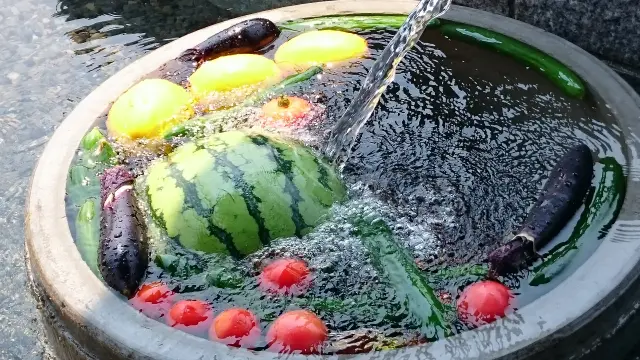
Shiga: Days Steeped in Nature and Blessed Waters Along Lake Biwa
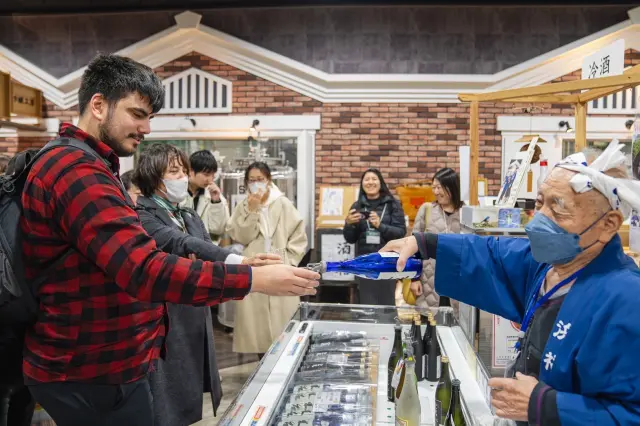
Hyogo: A Journey in Search of Japan’s Finest Sake
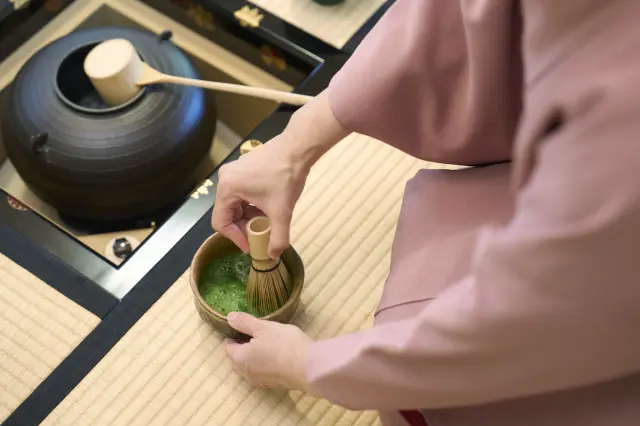
Osaka: A Journey Through Traditional Osaka
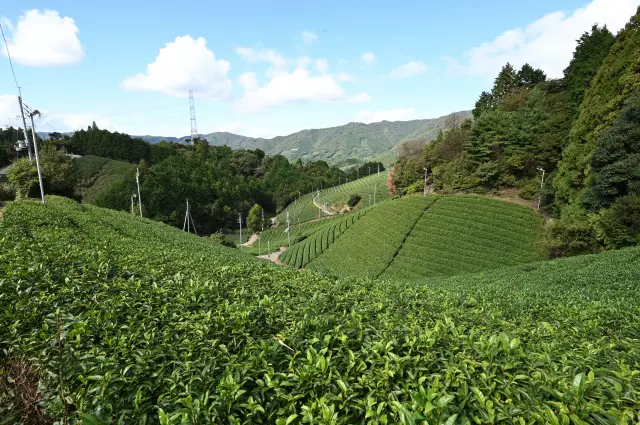
Kyoto: A Journey Through Japanese Gastronomy
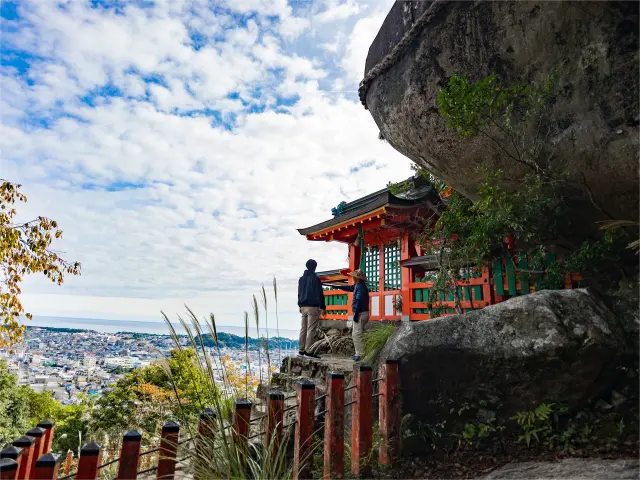
Wakayama: A World Heritage Site and Journey of Deep Mystique at the Kumano Kodo

Mie: A Journey to Experience the "Ama Culture" Living Along the Beautiful Ise-Shima Sea
